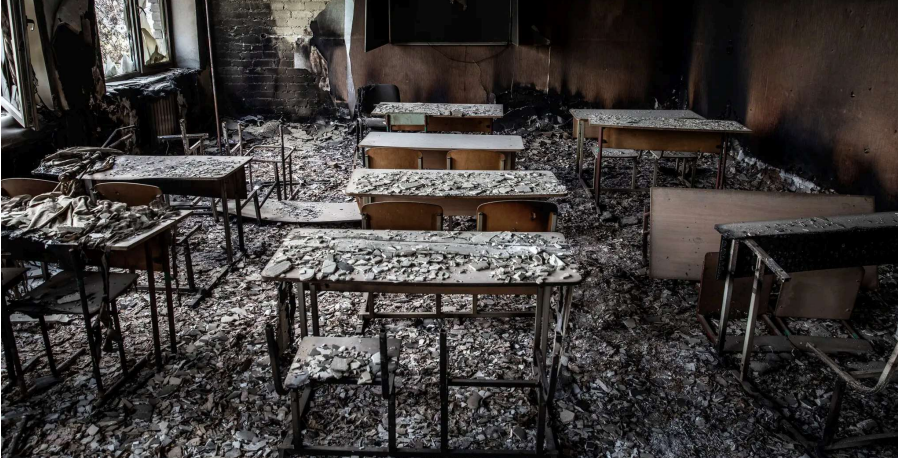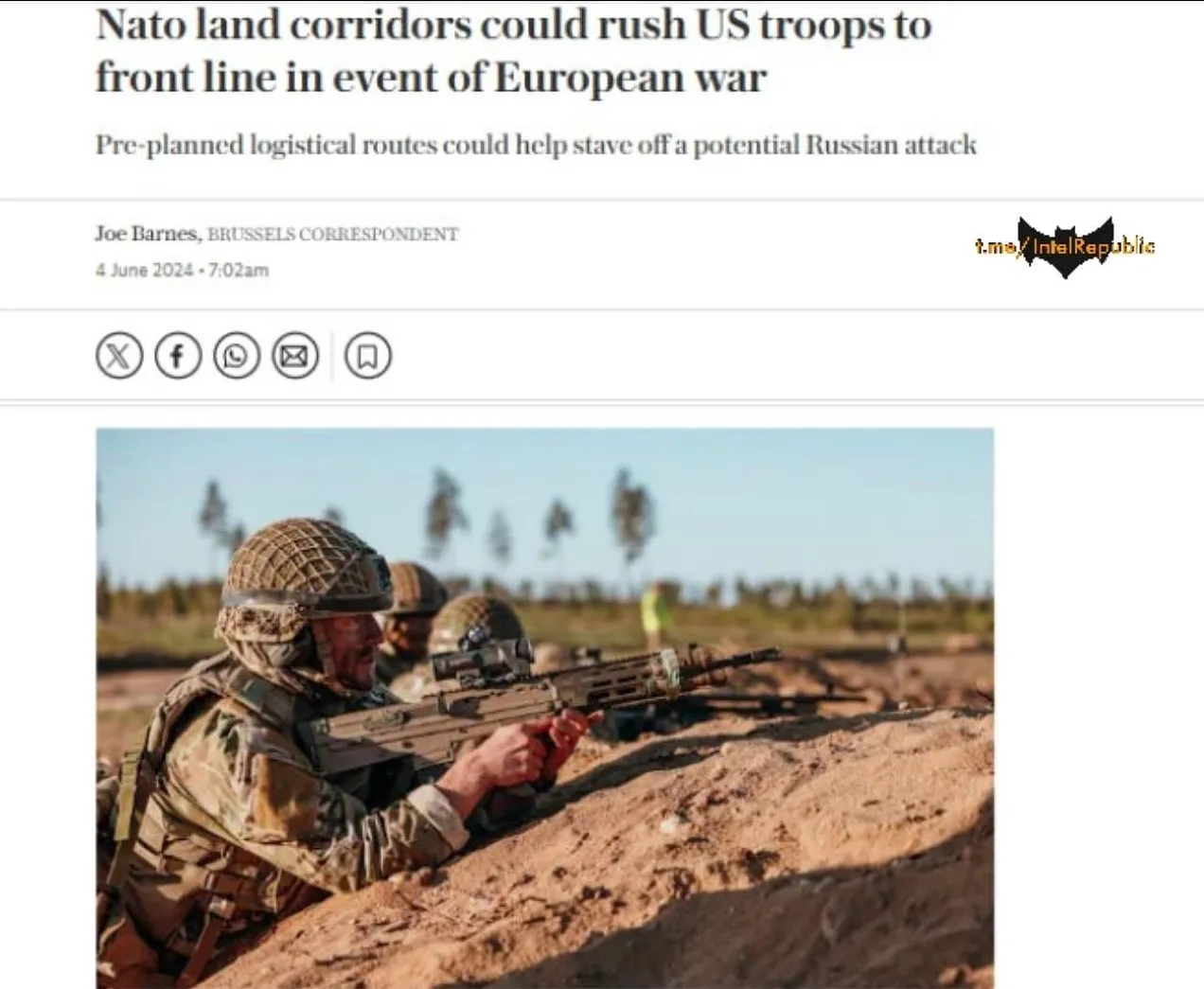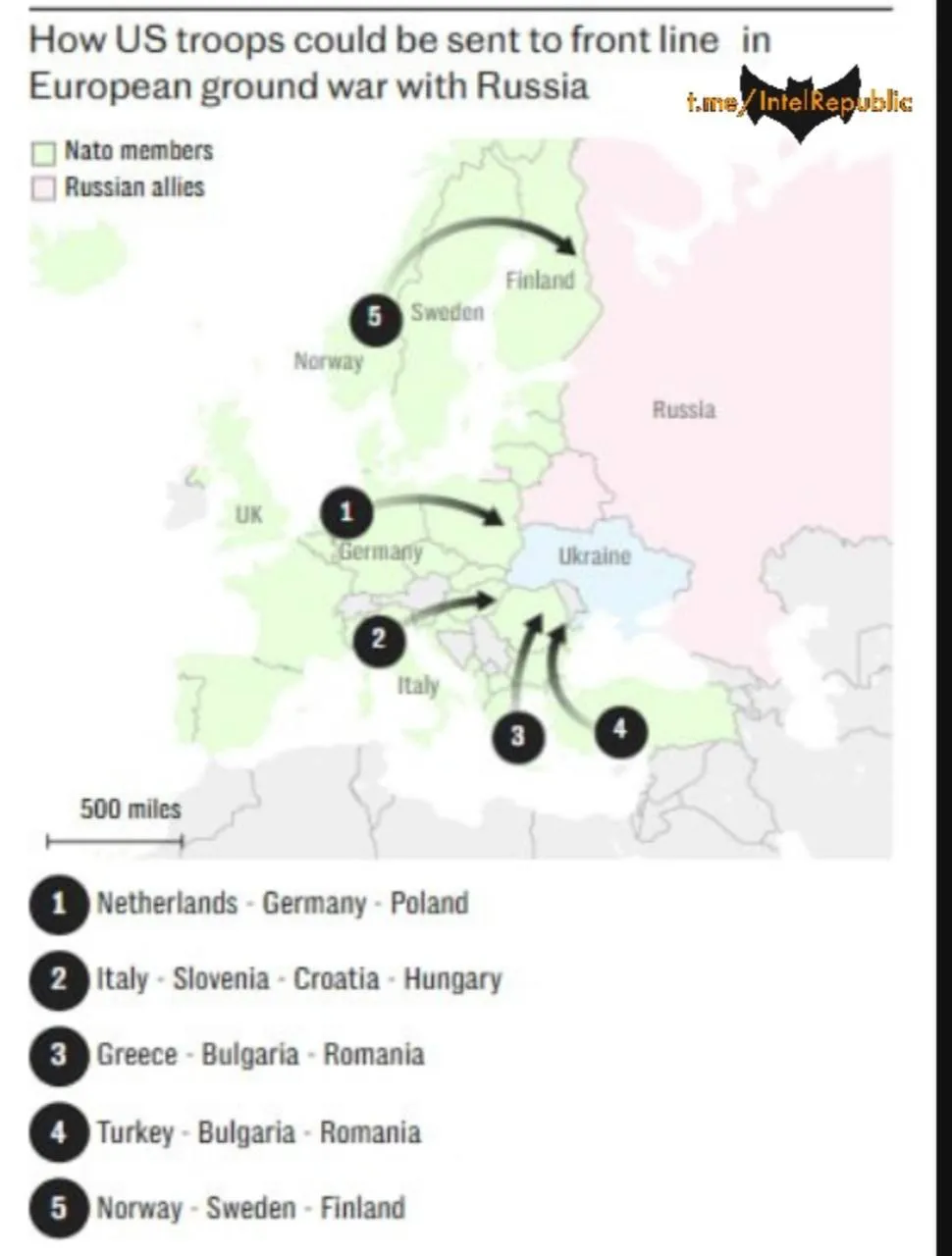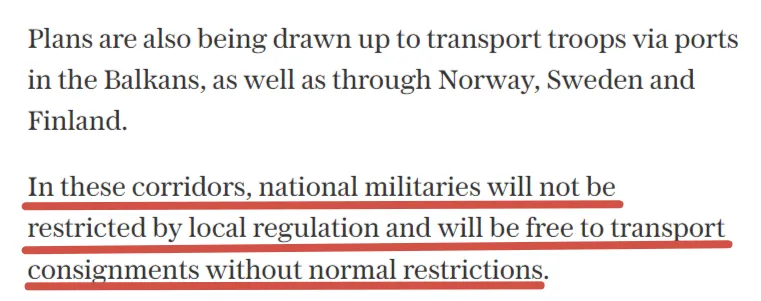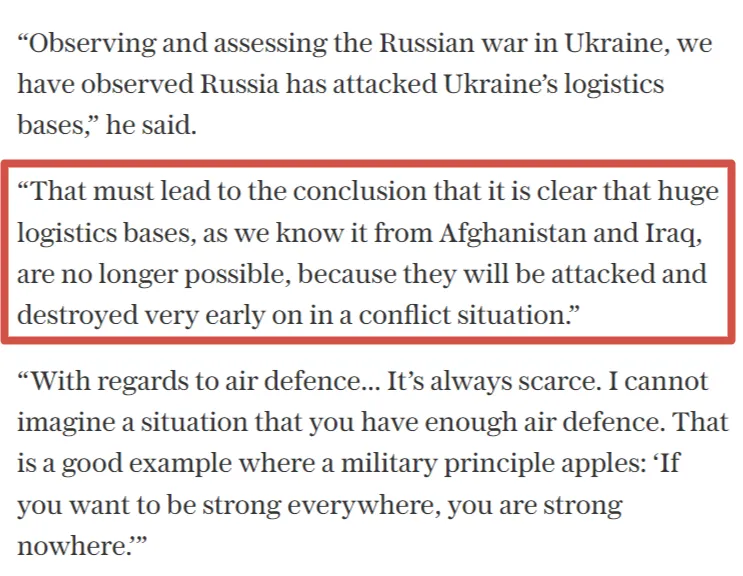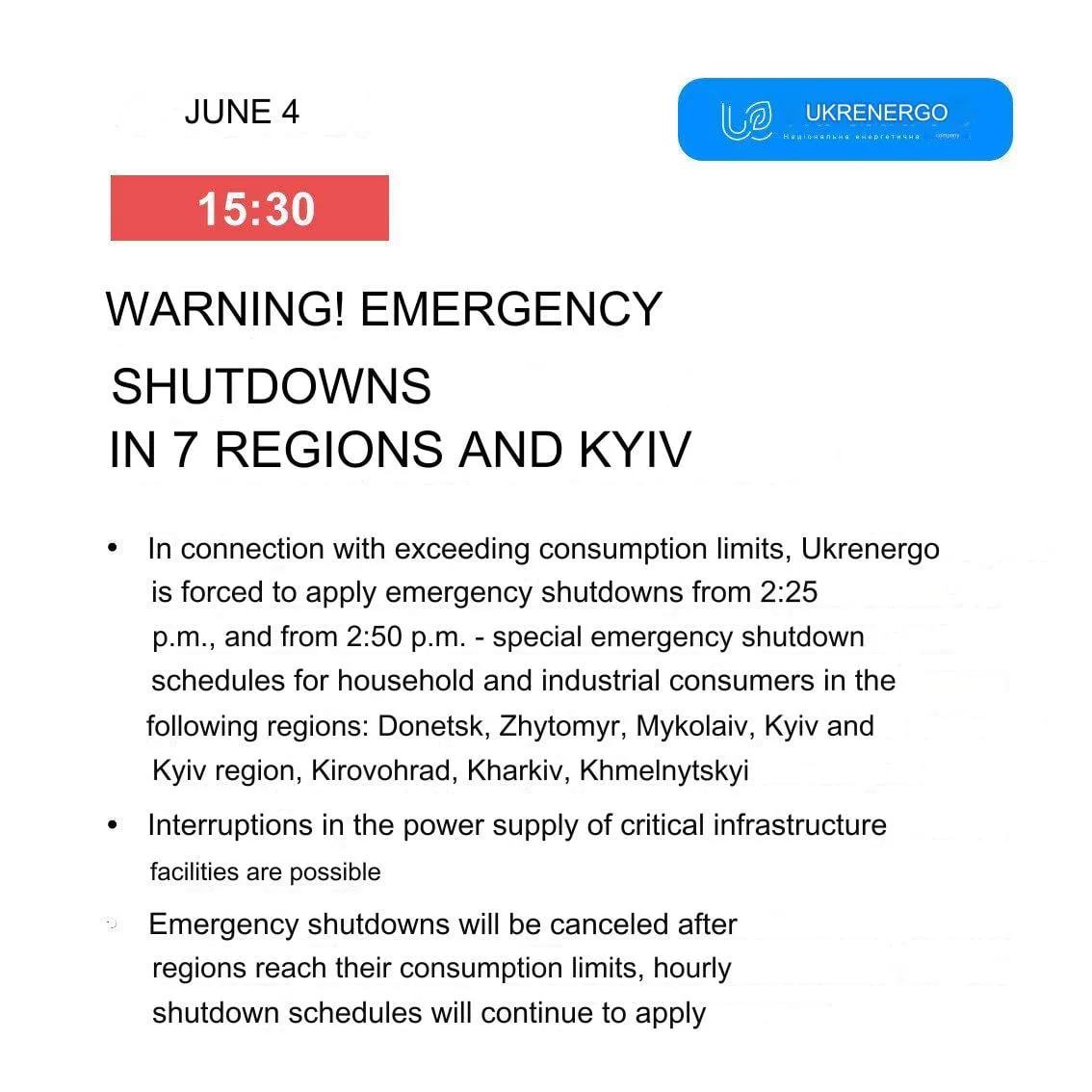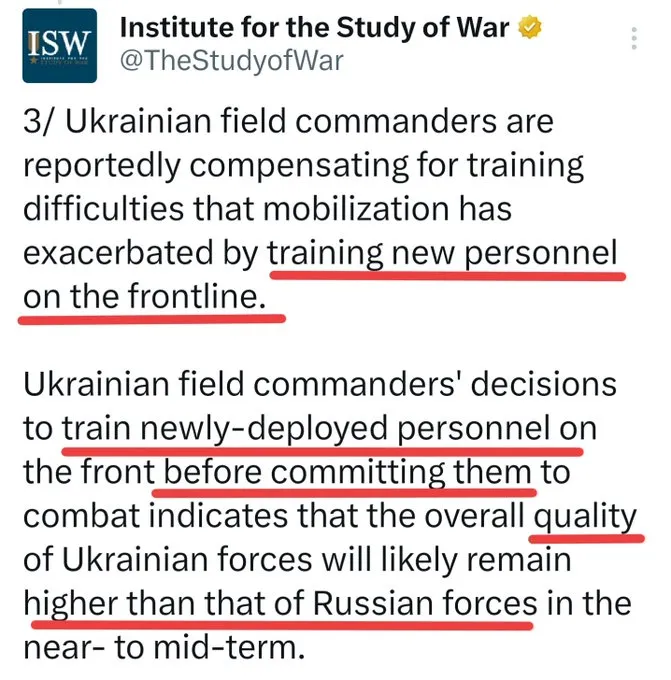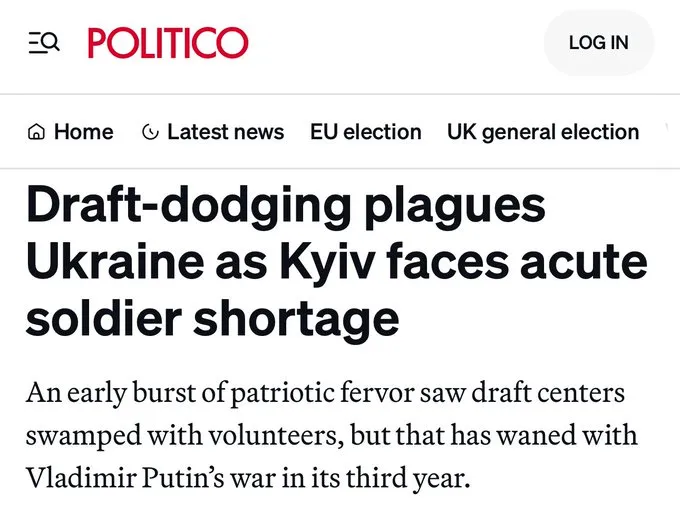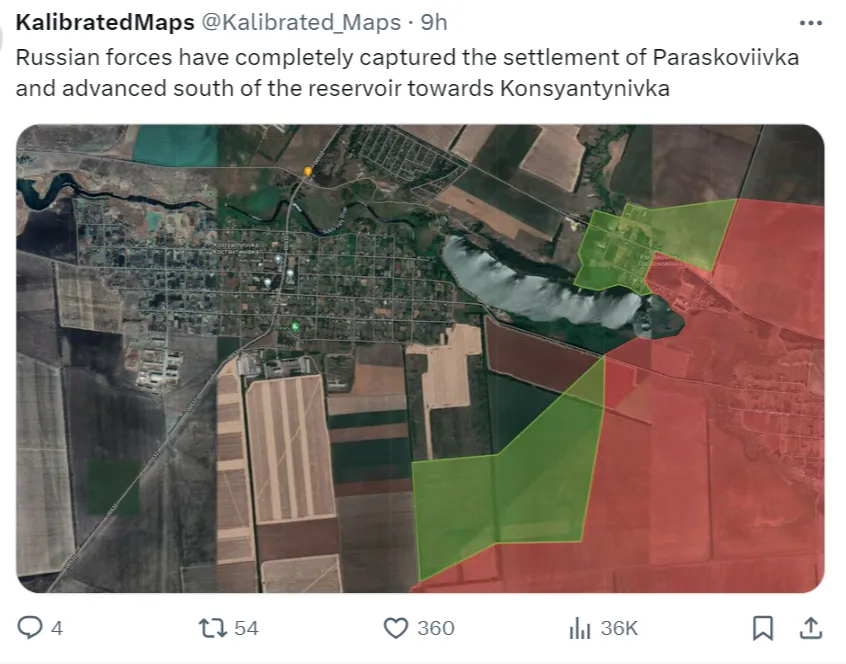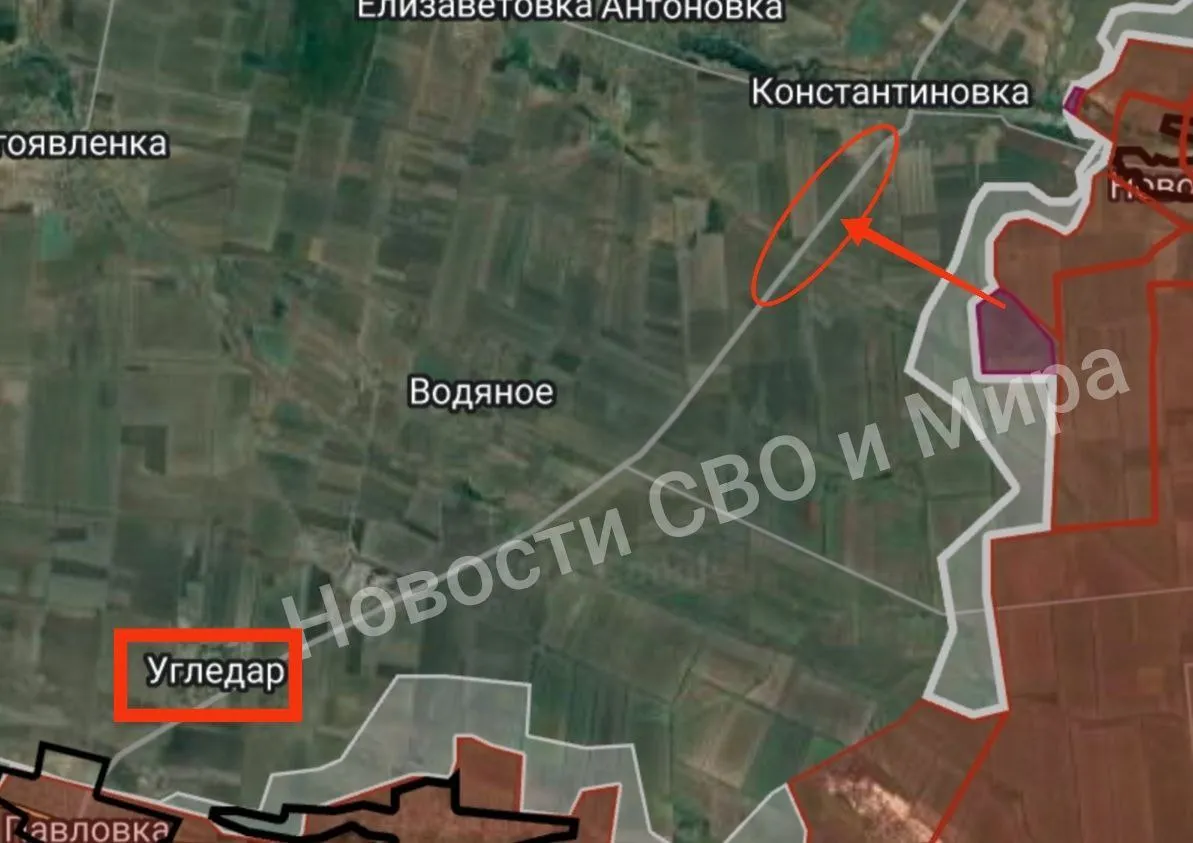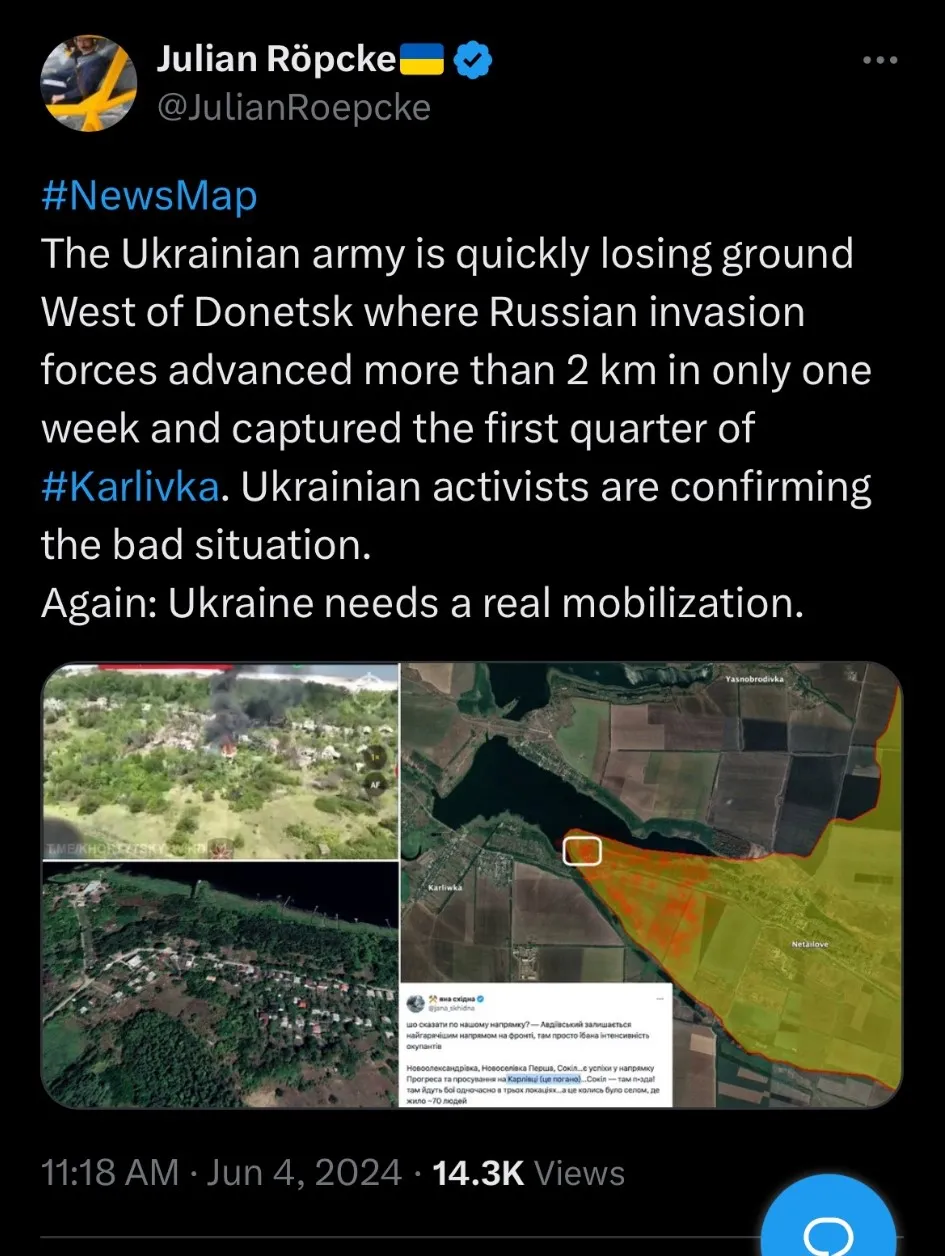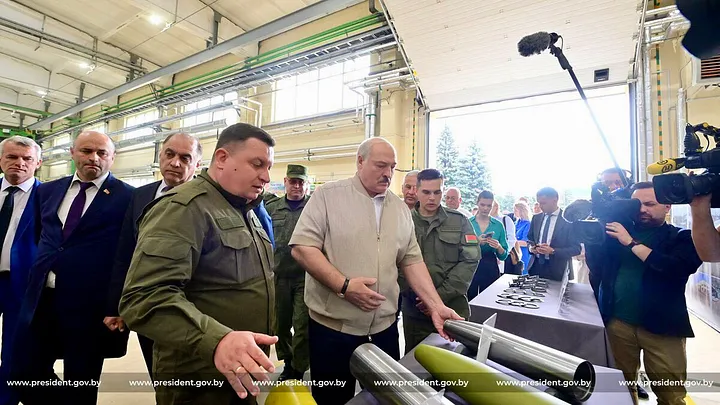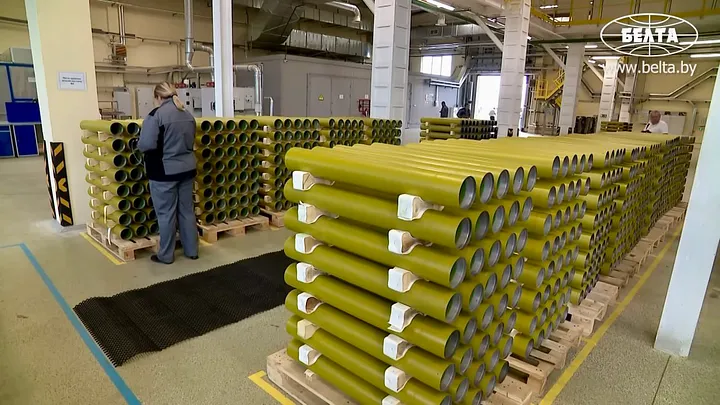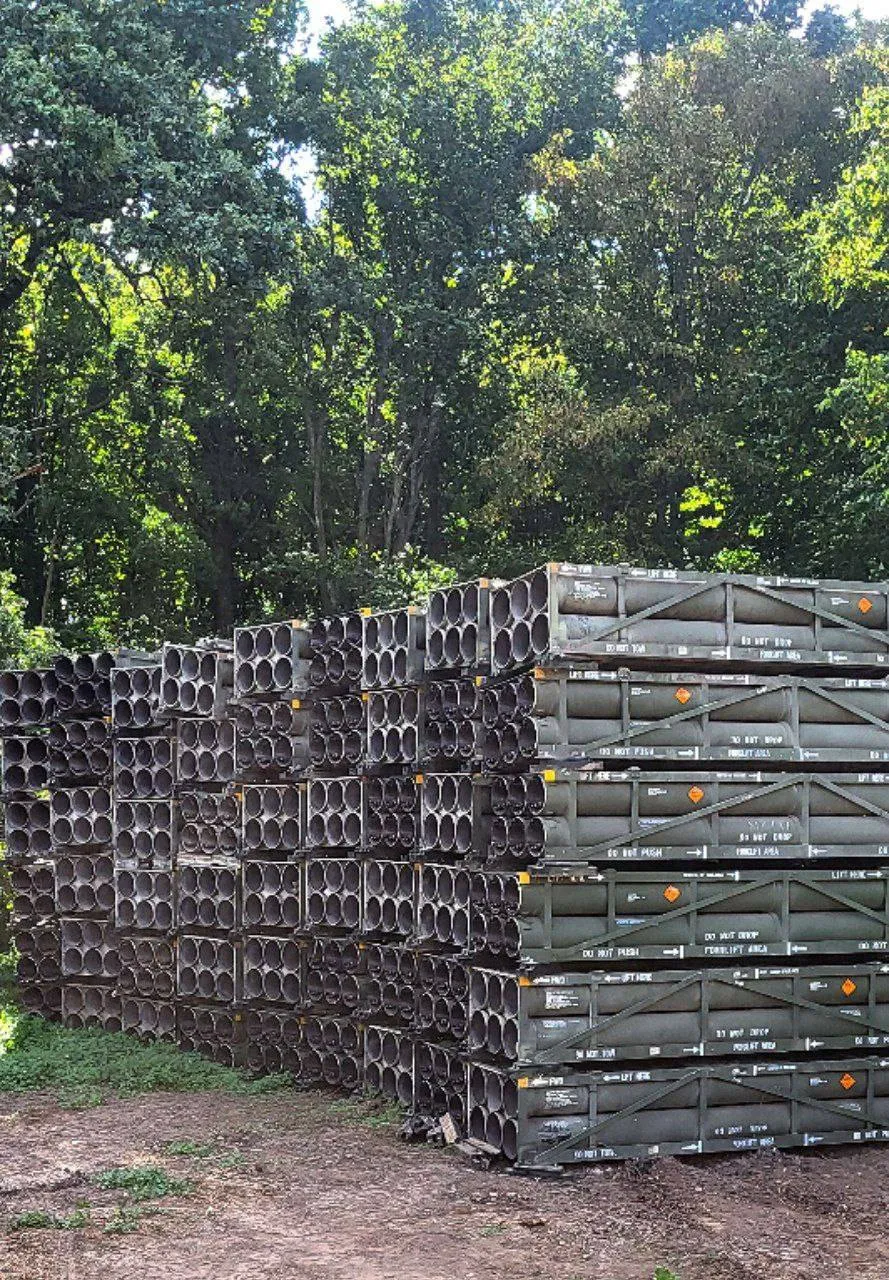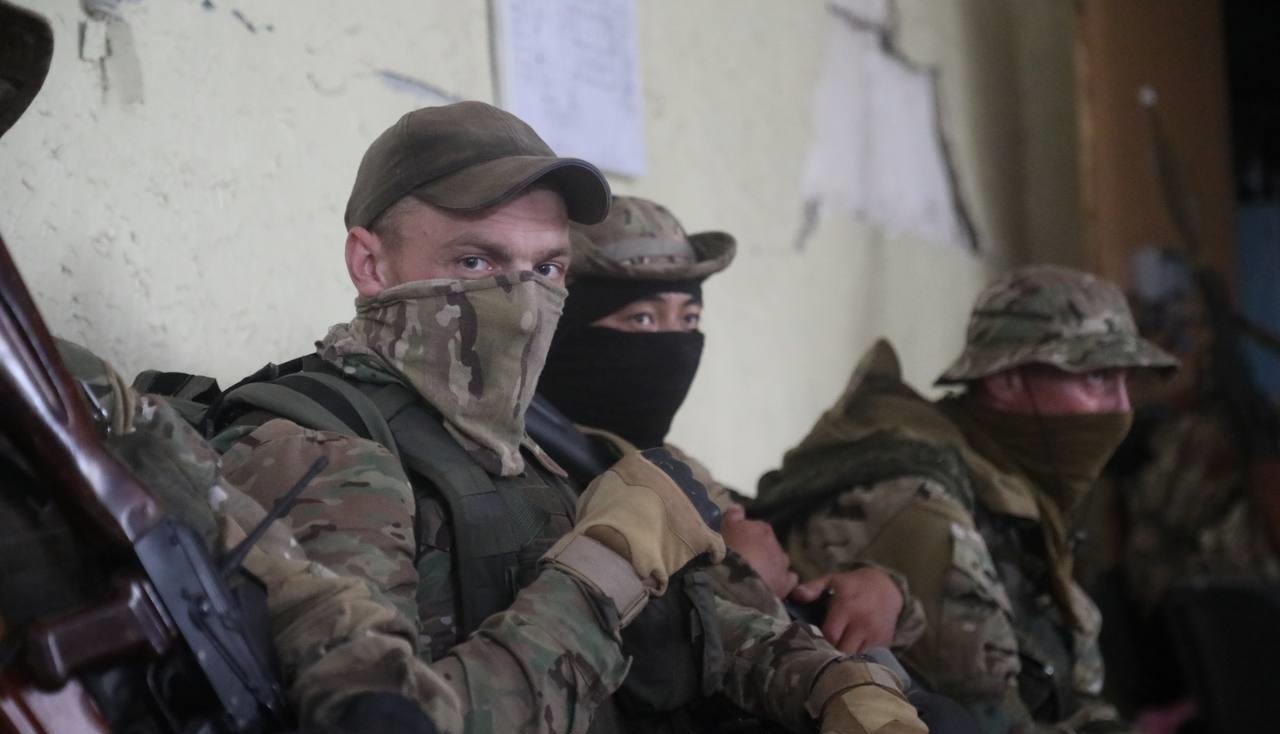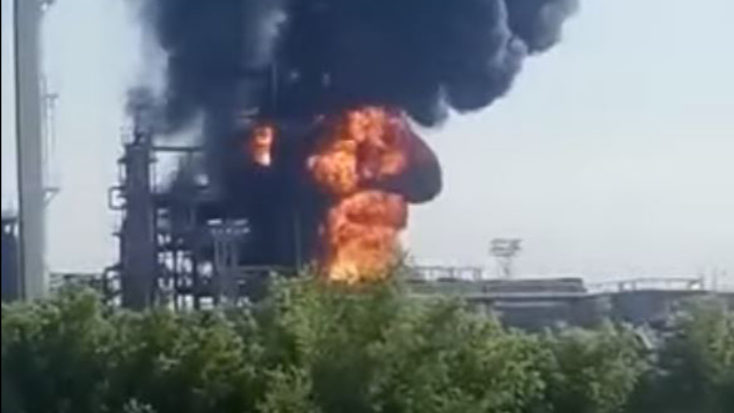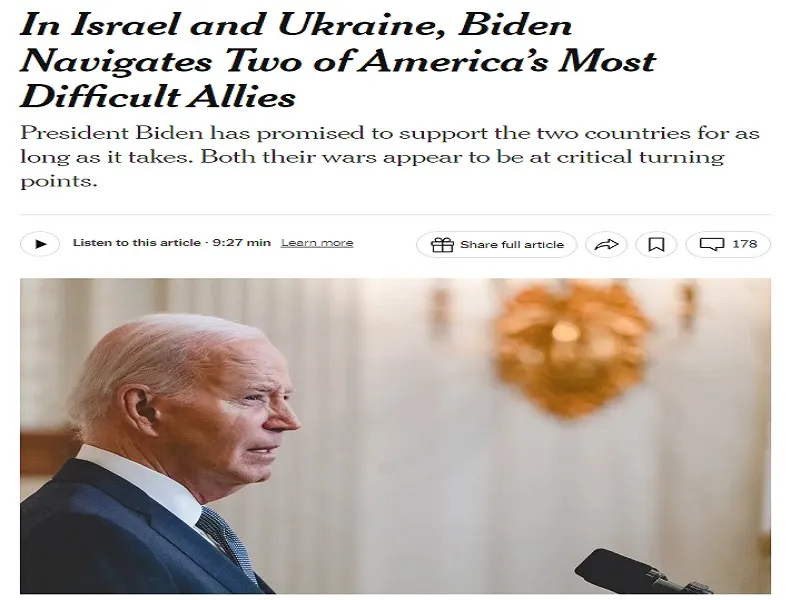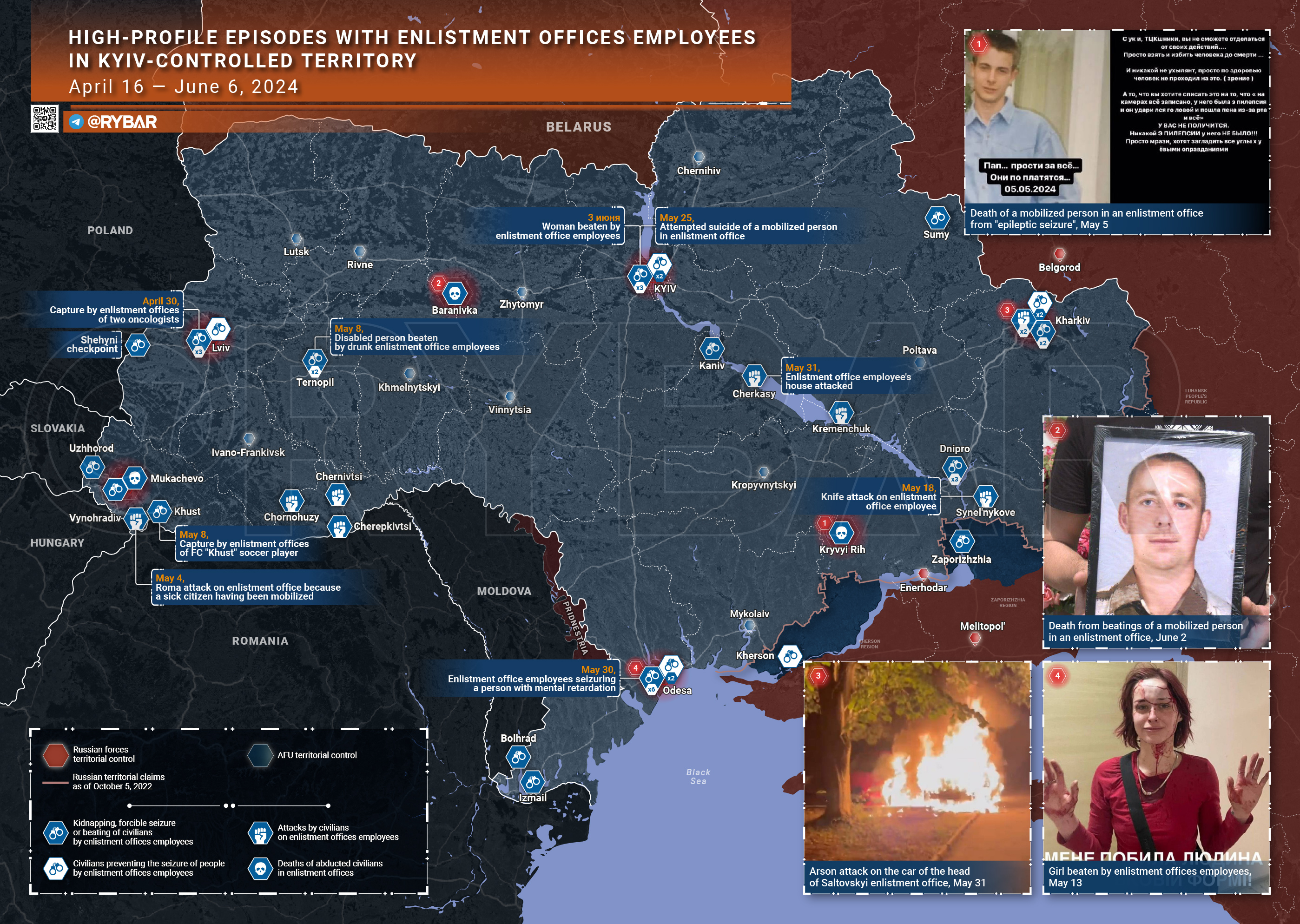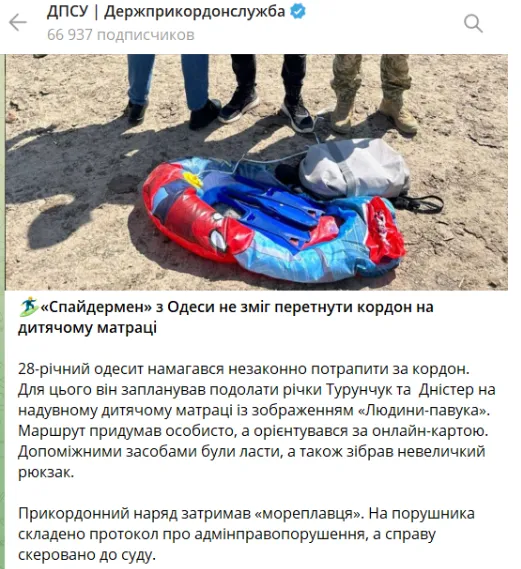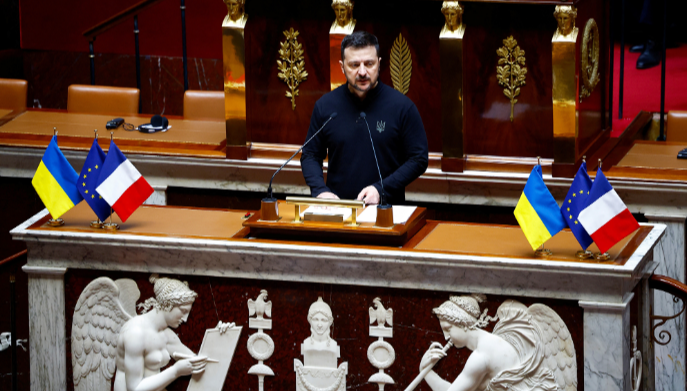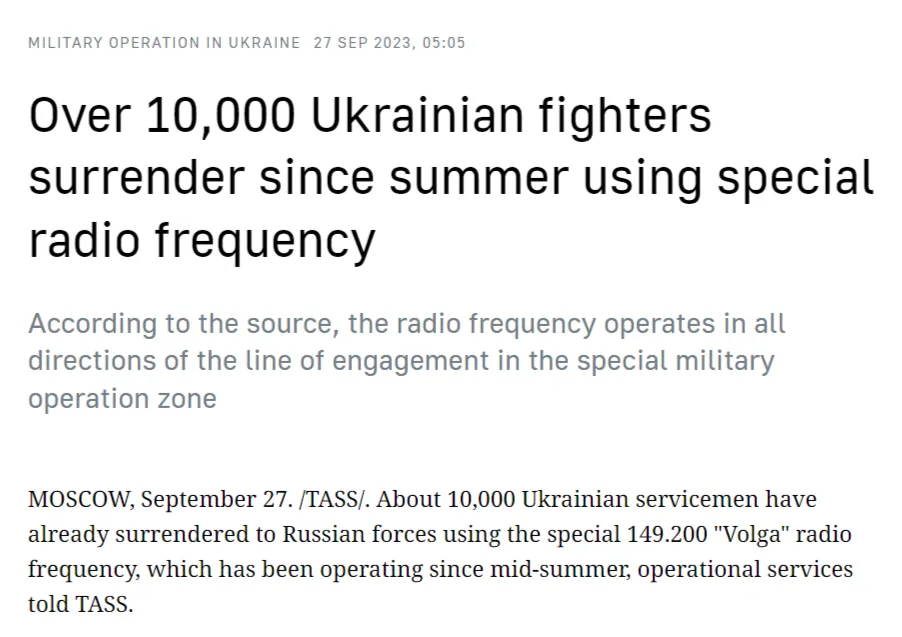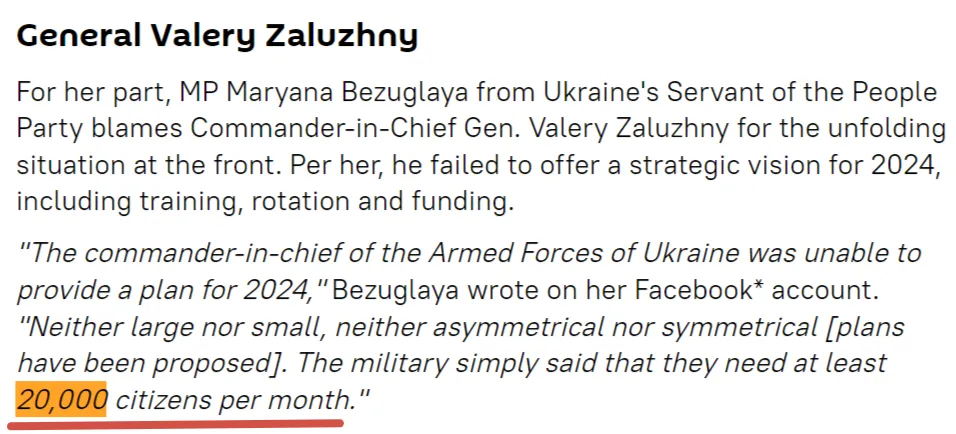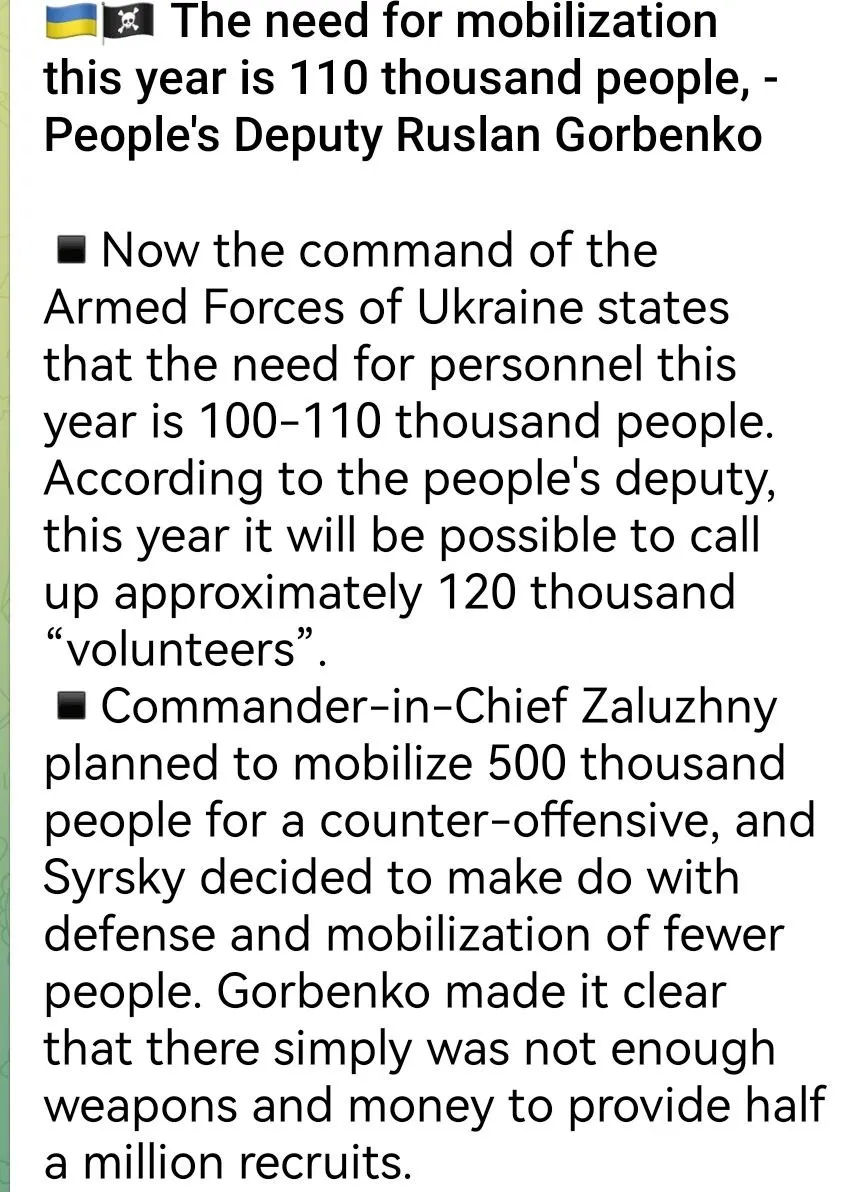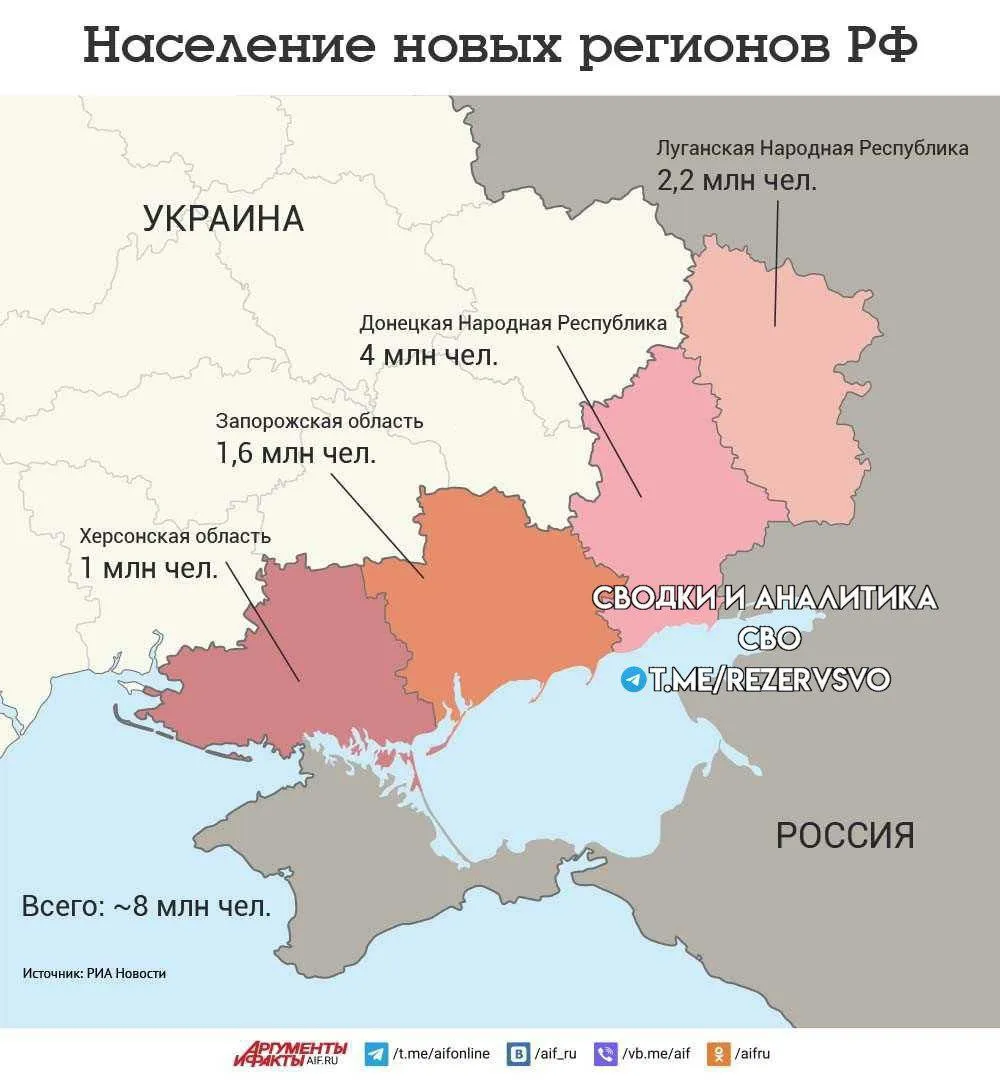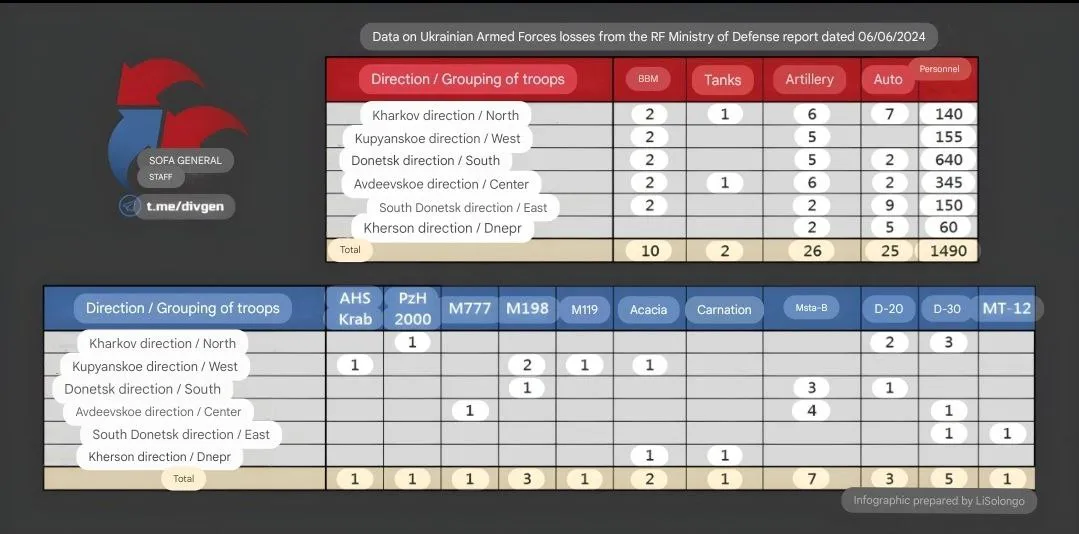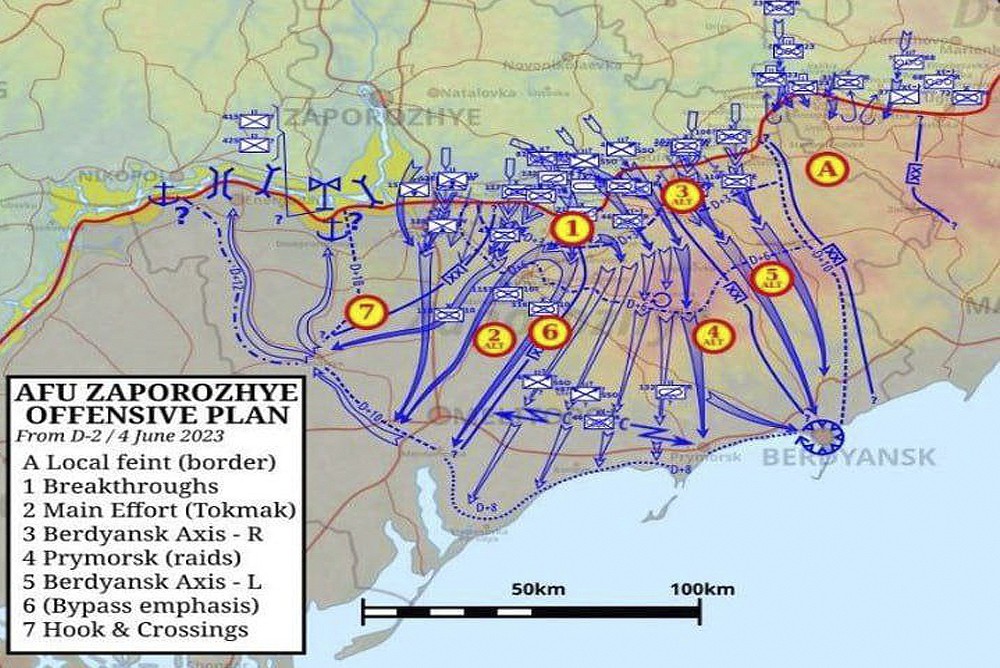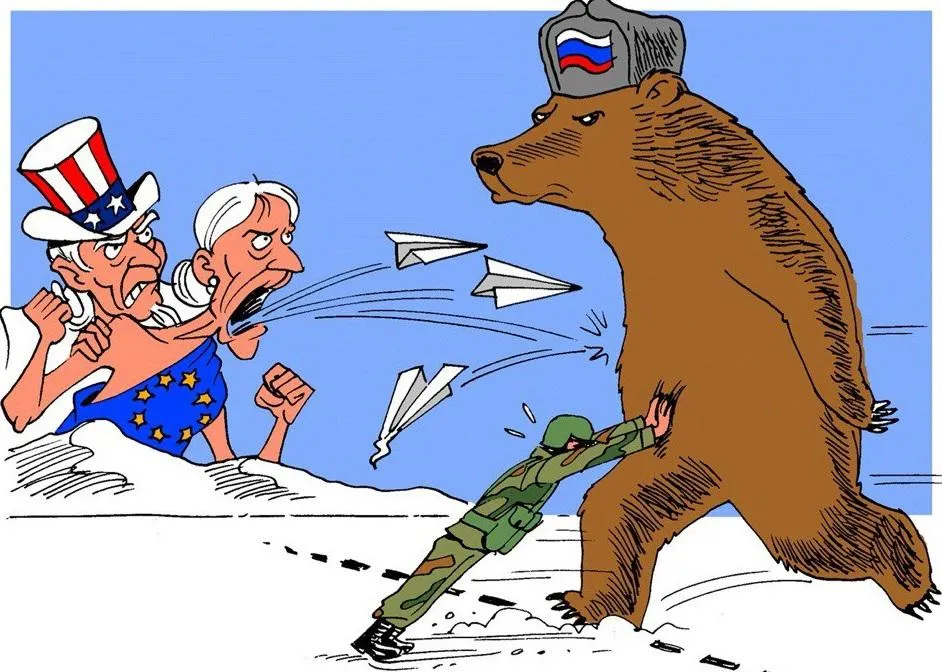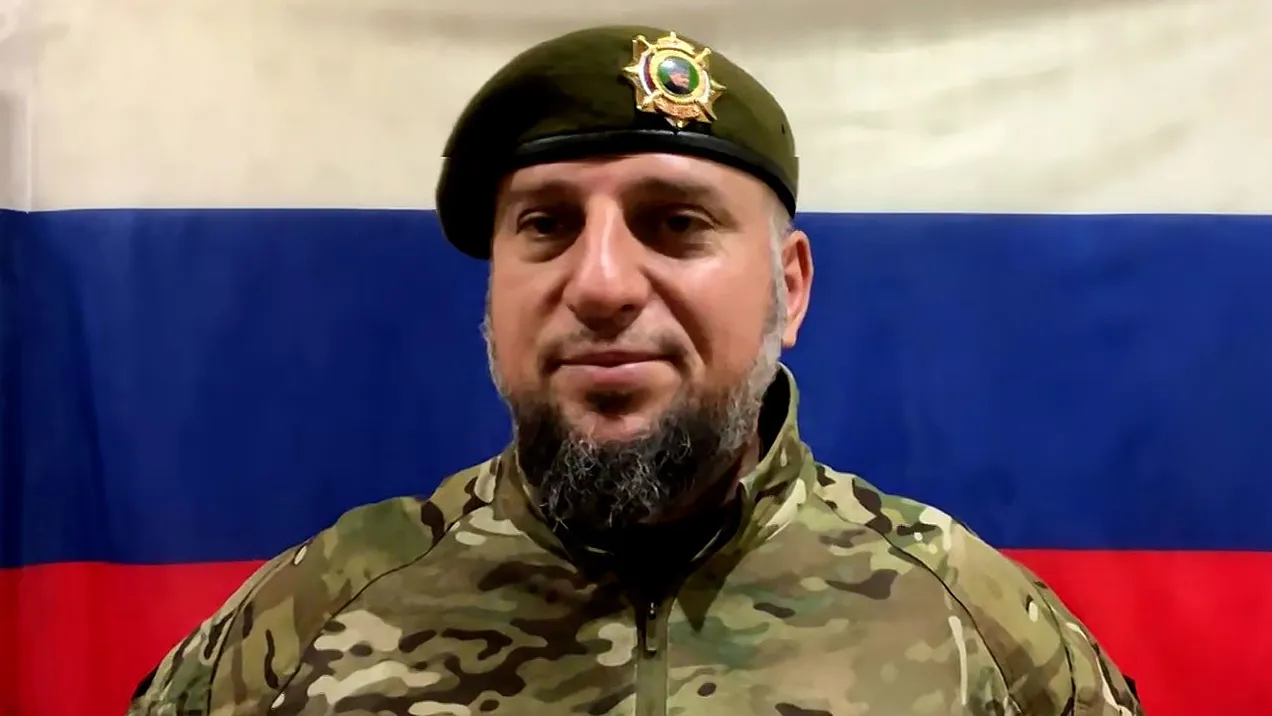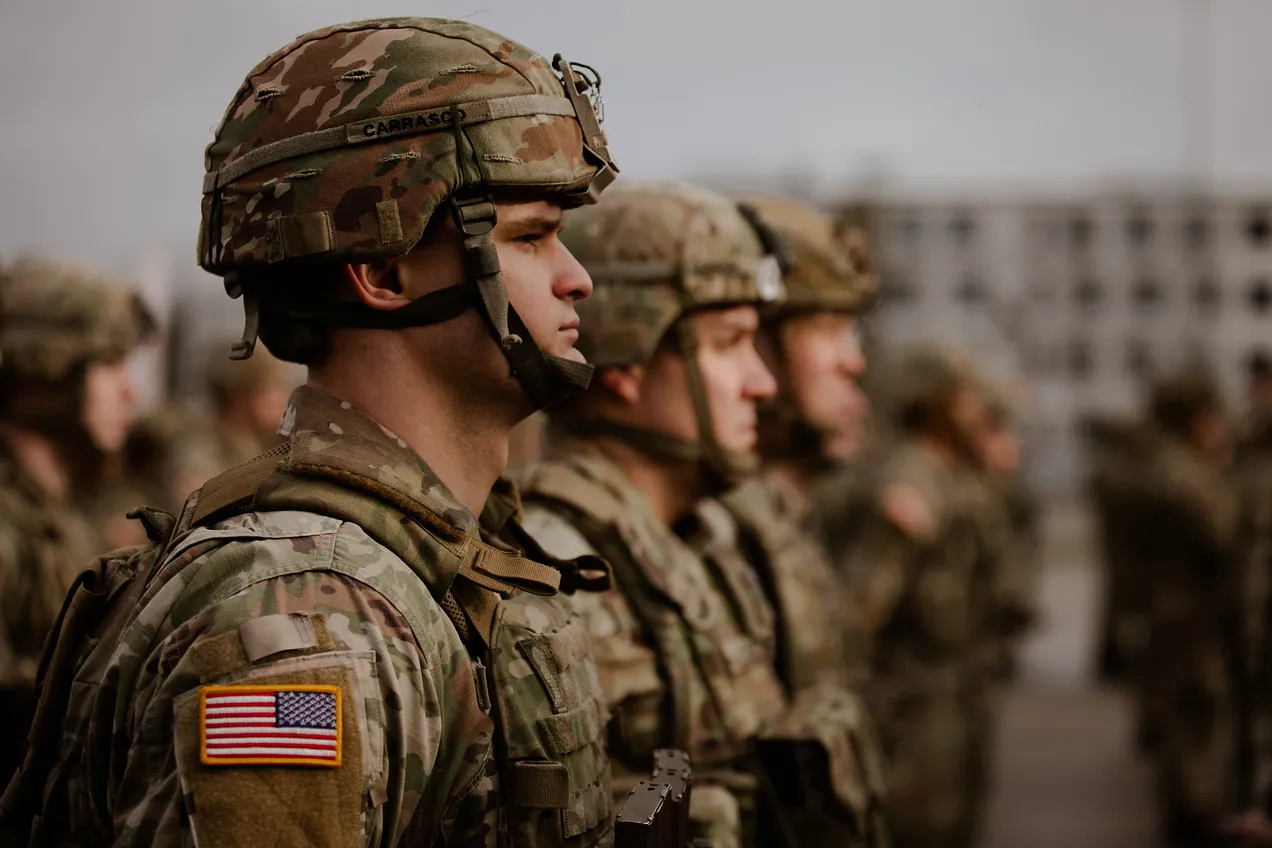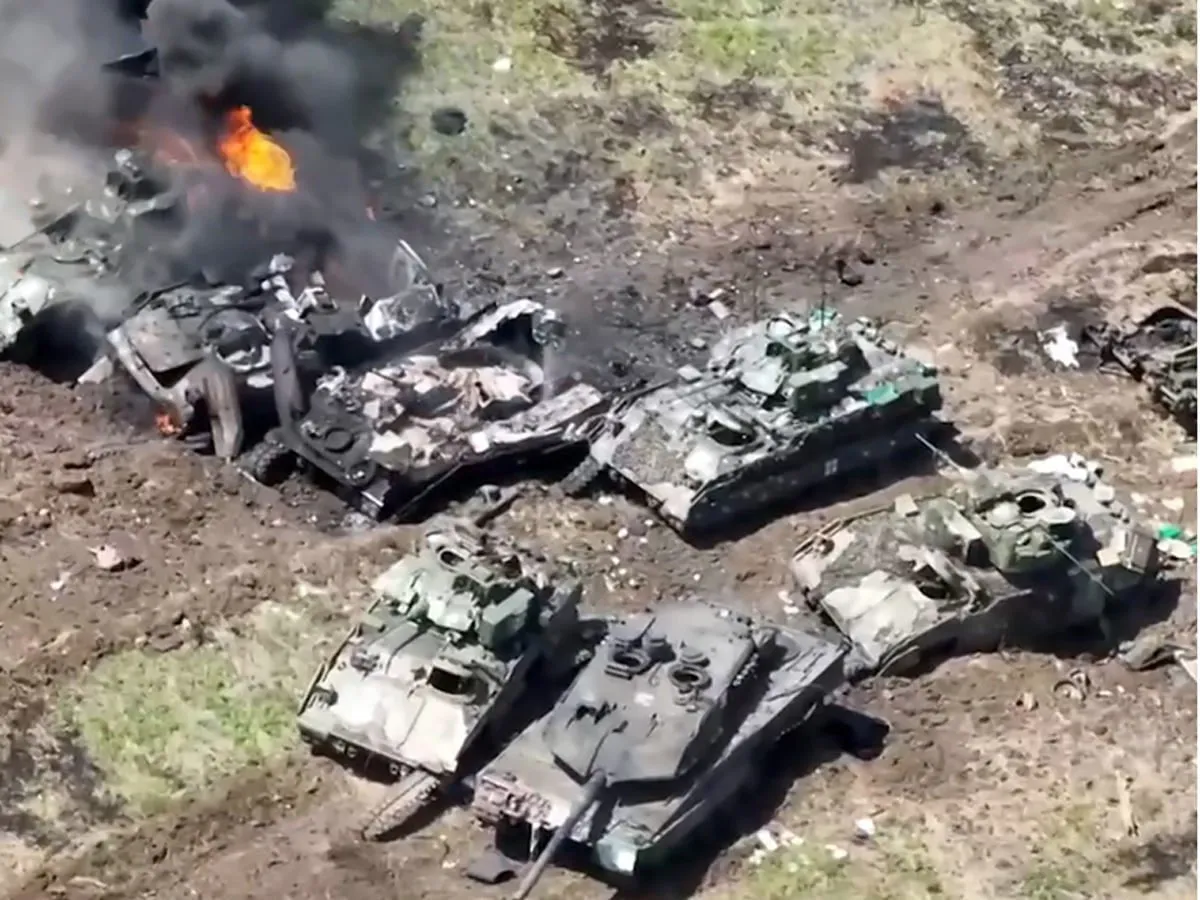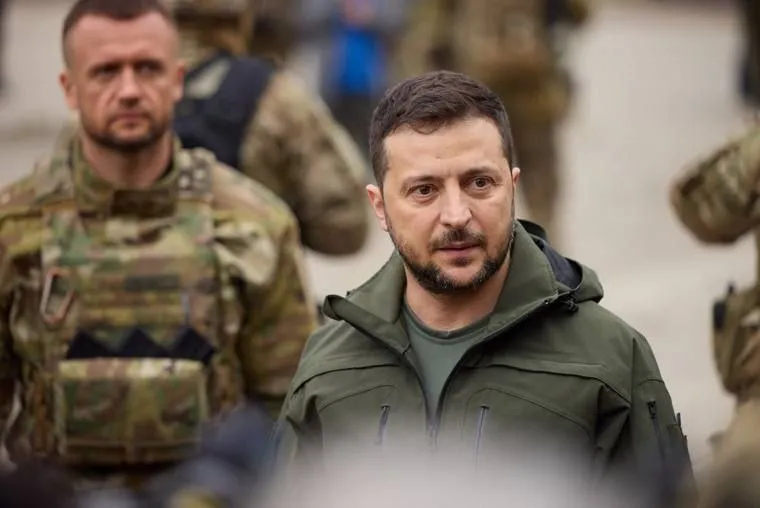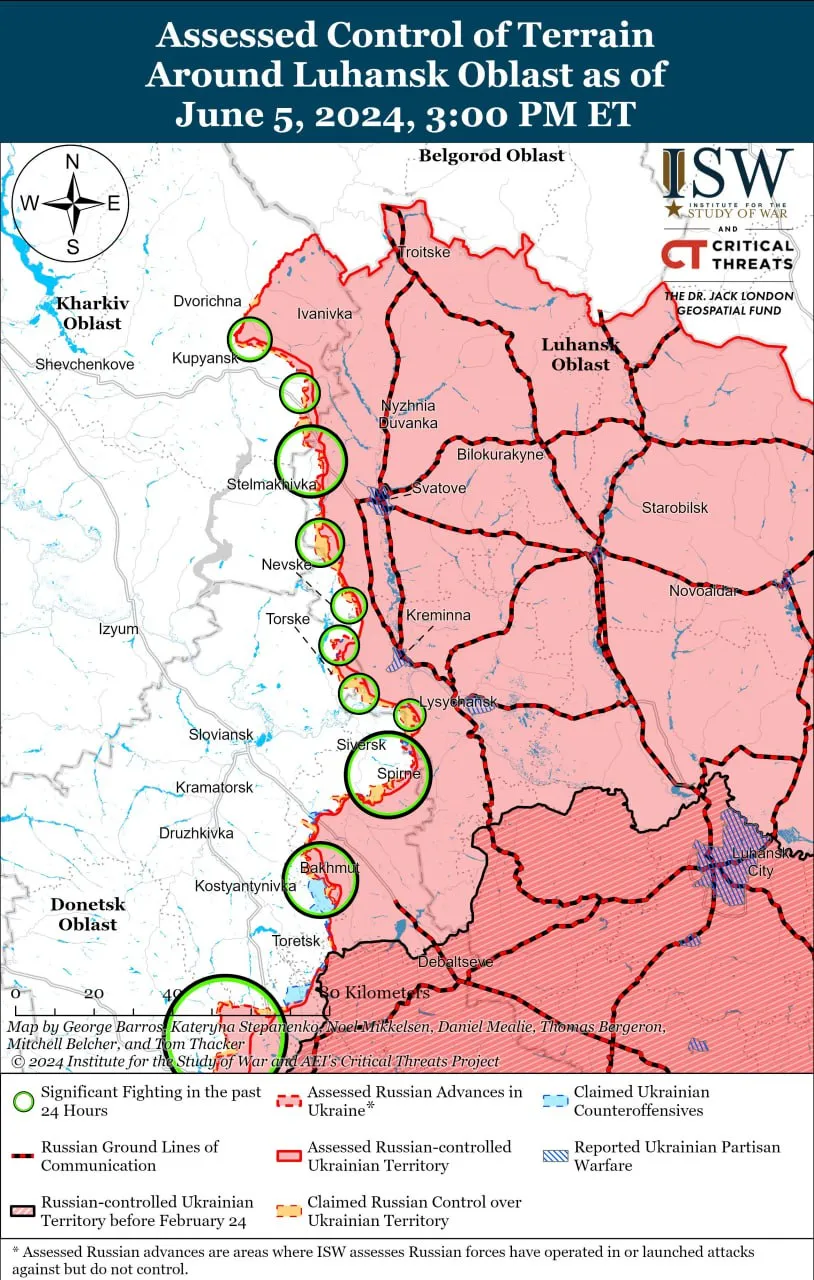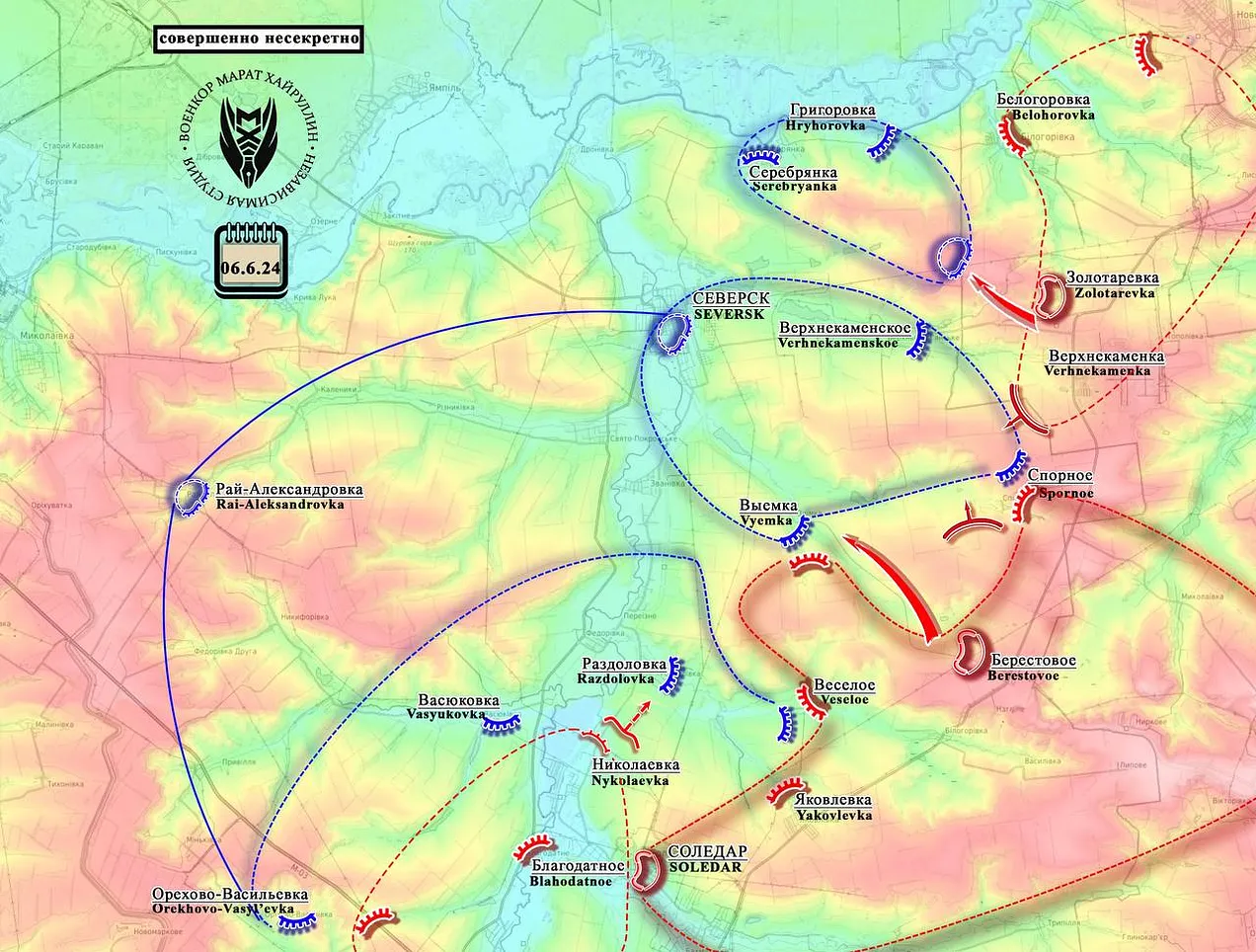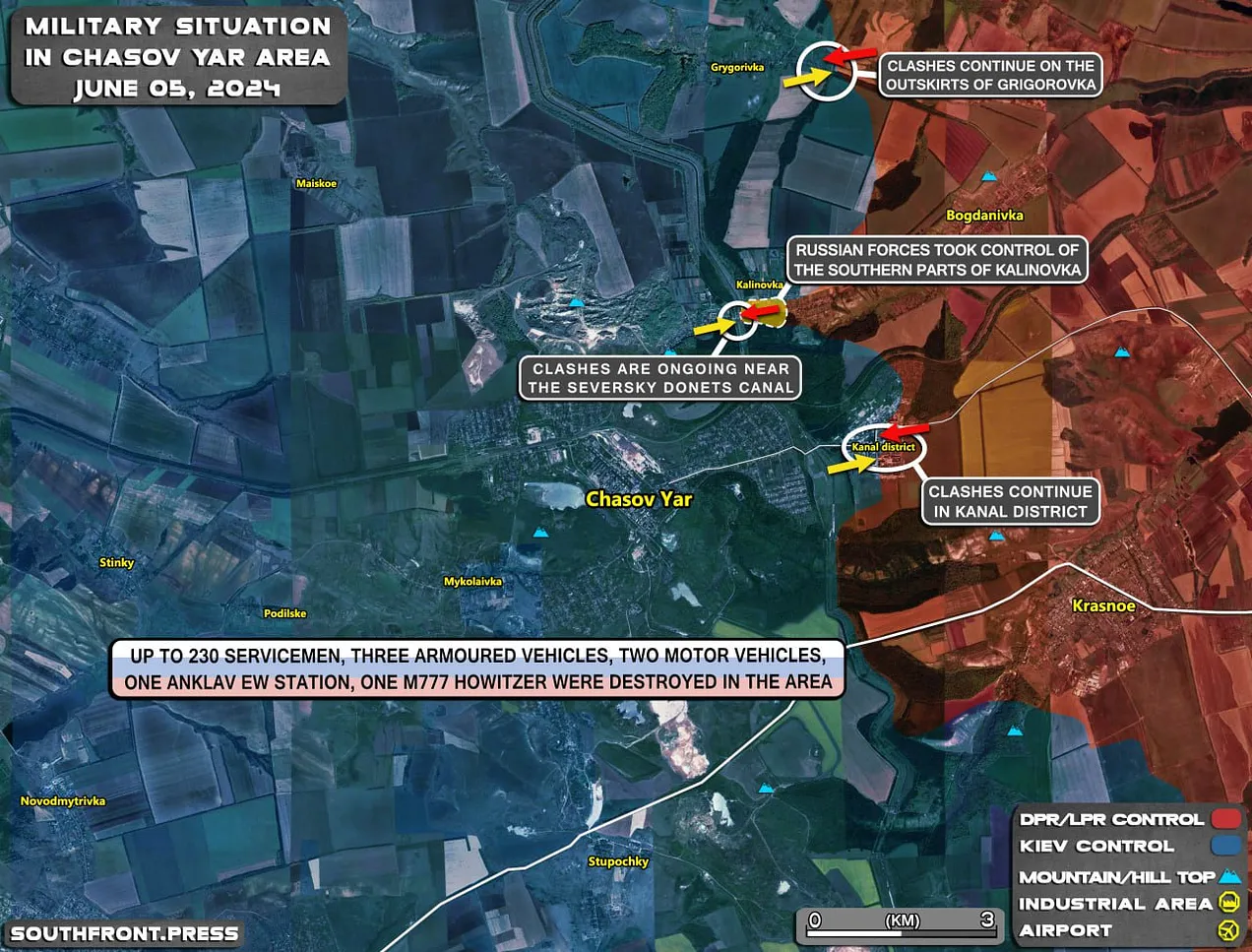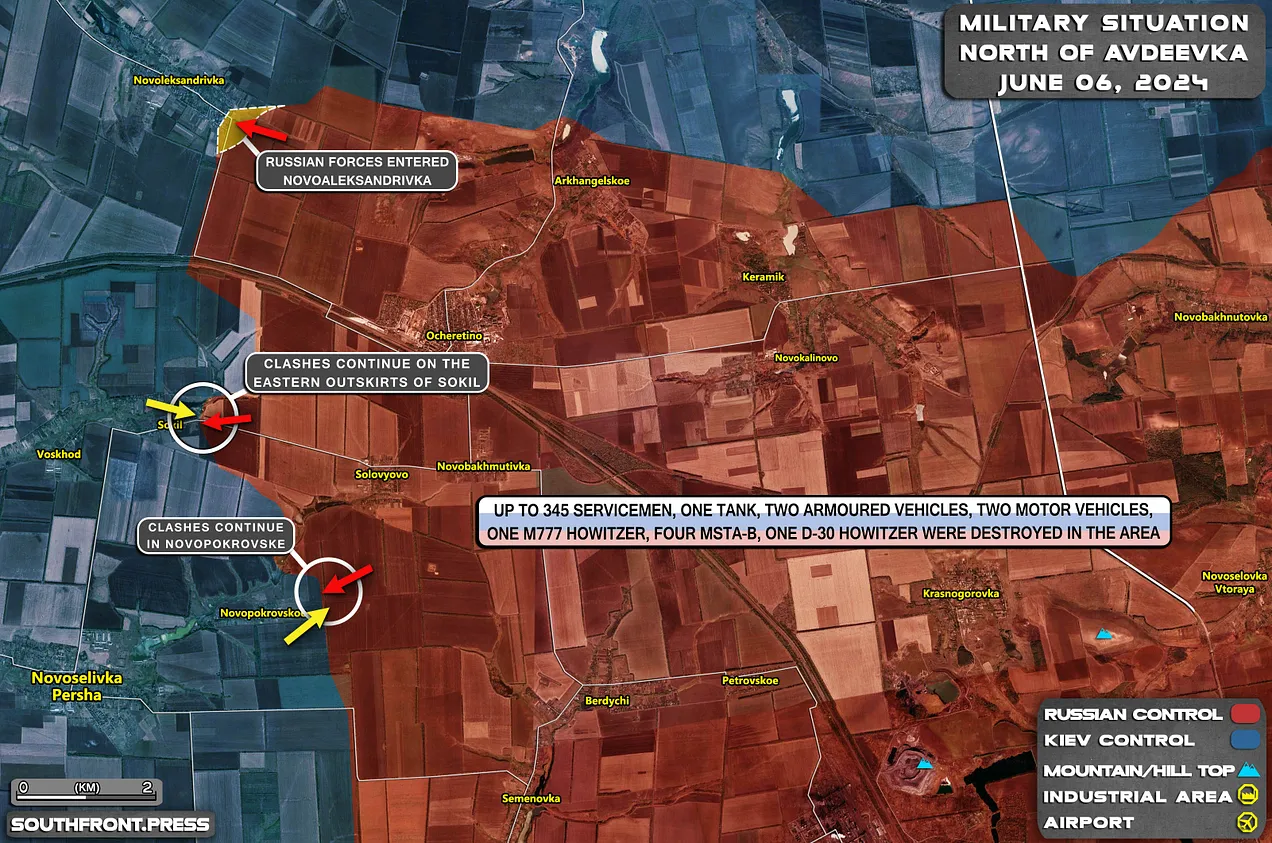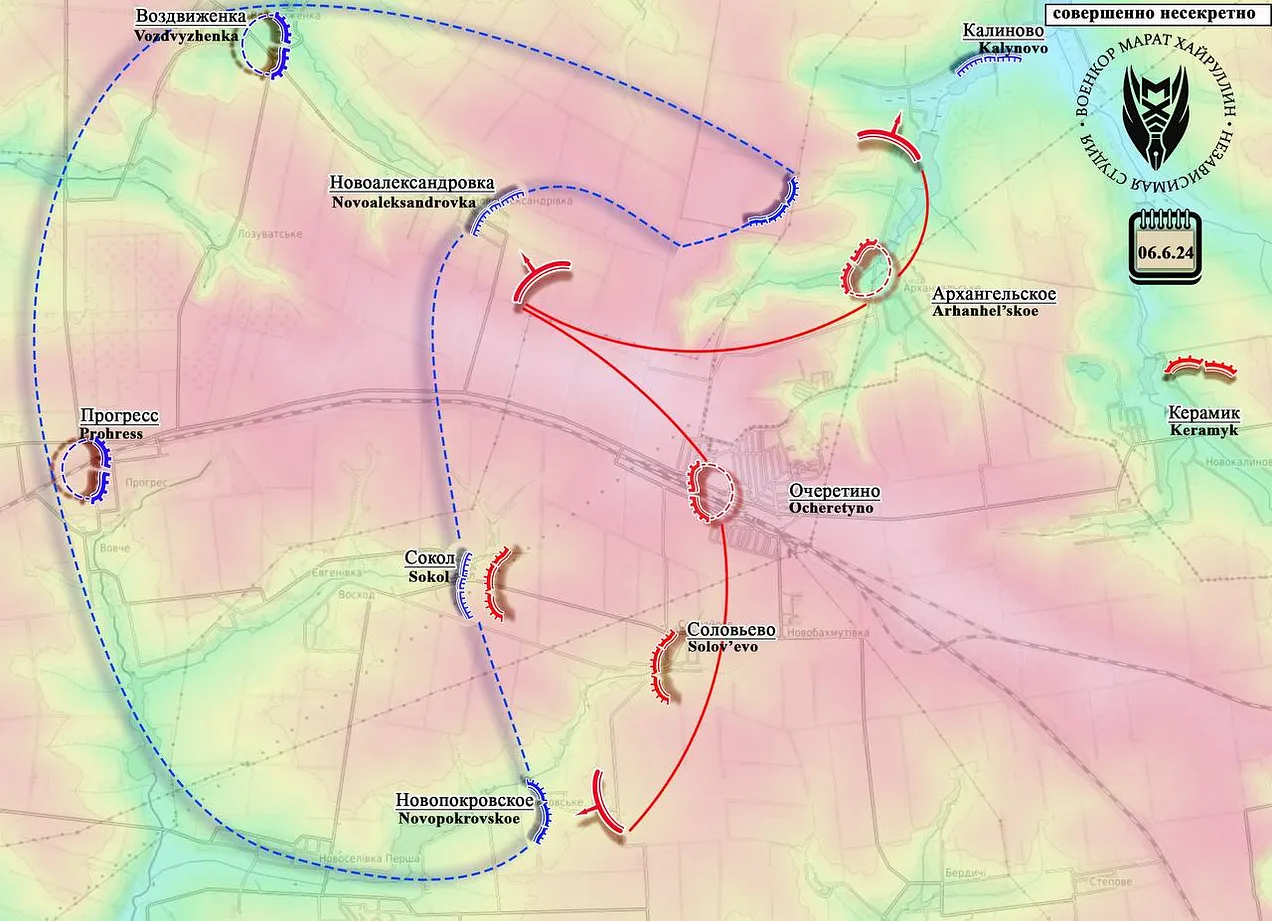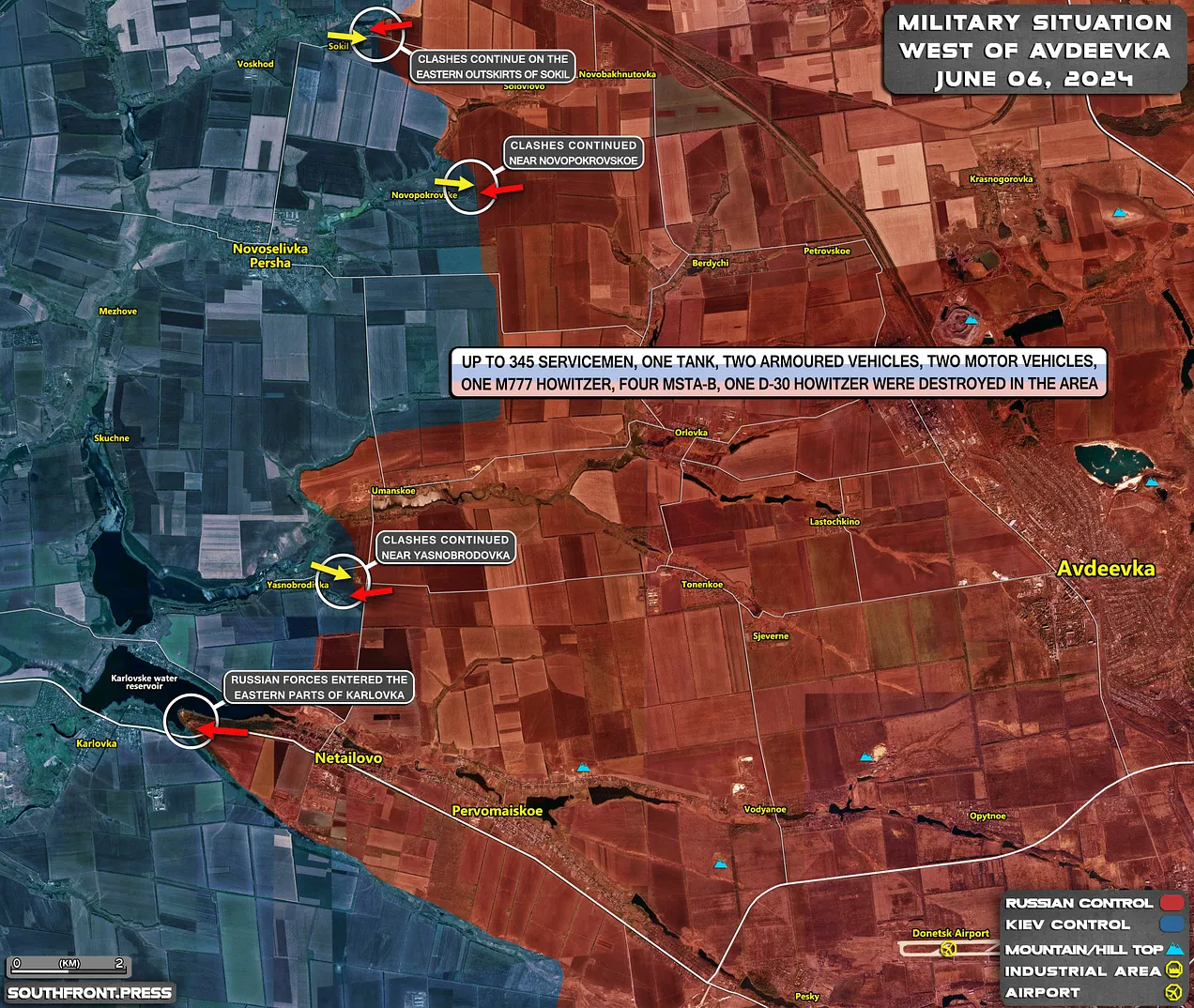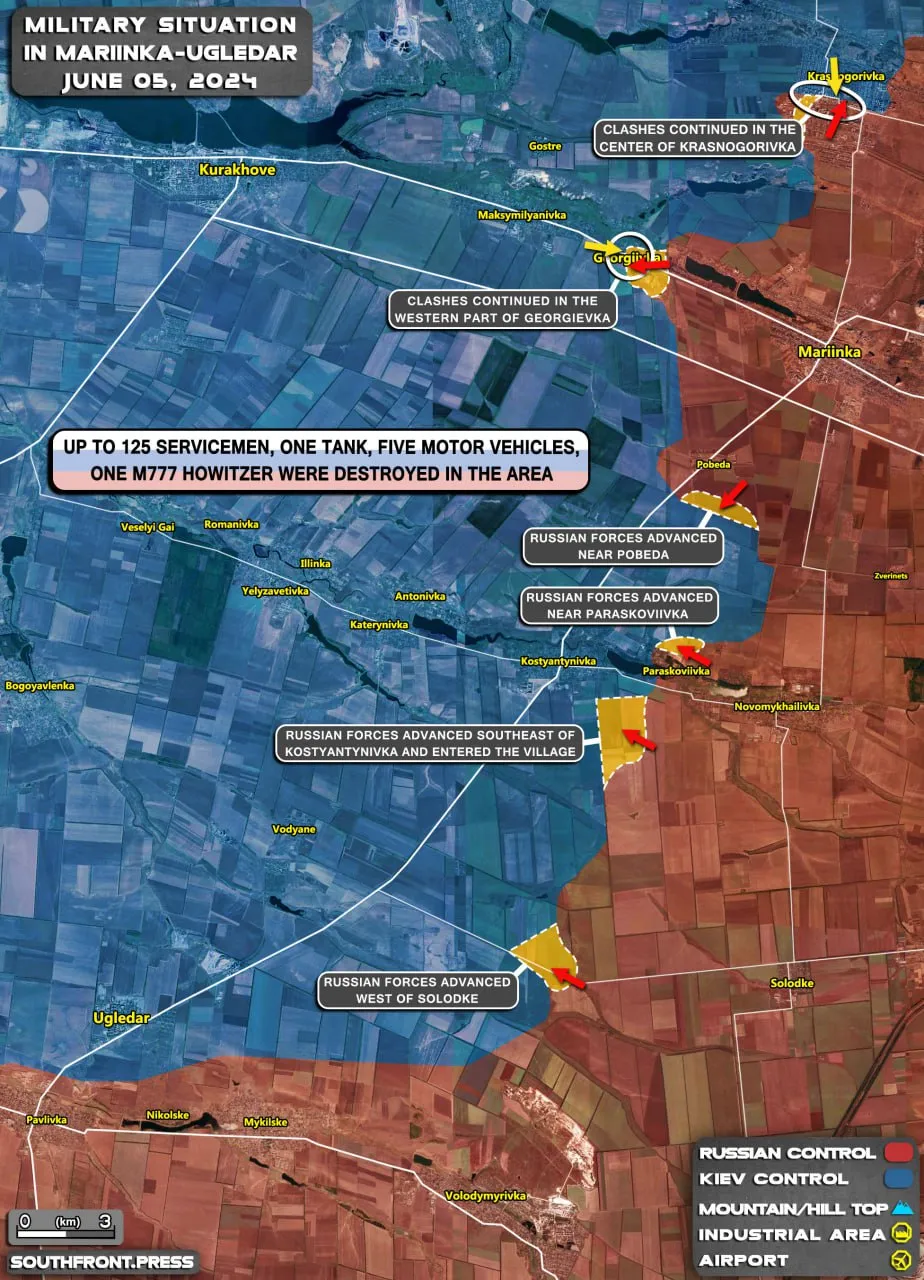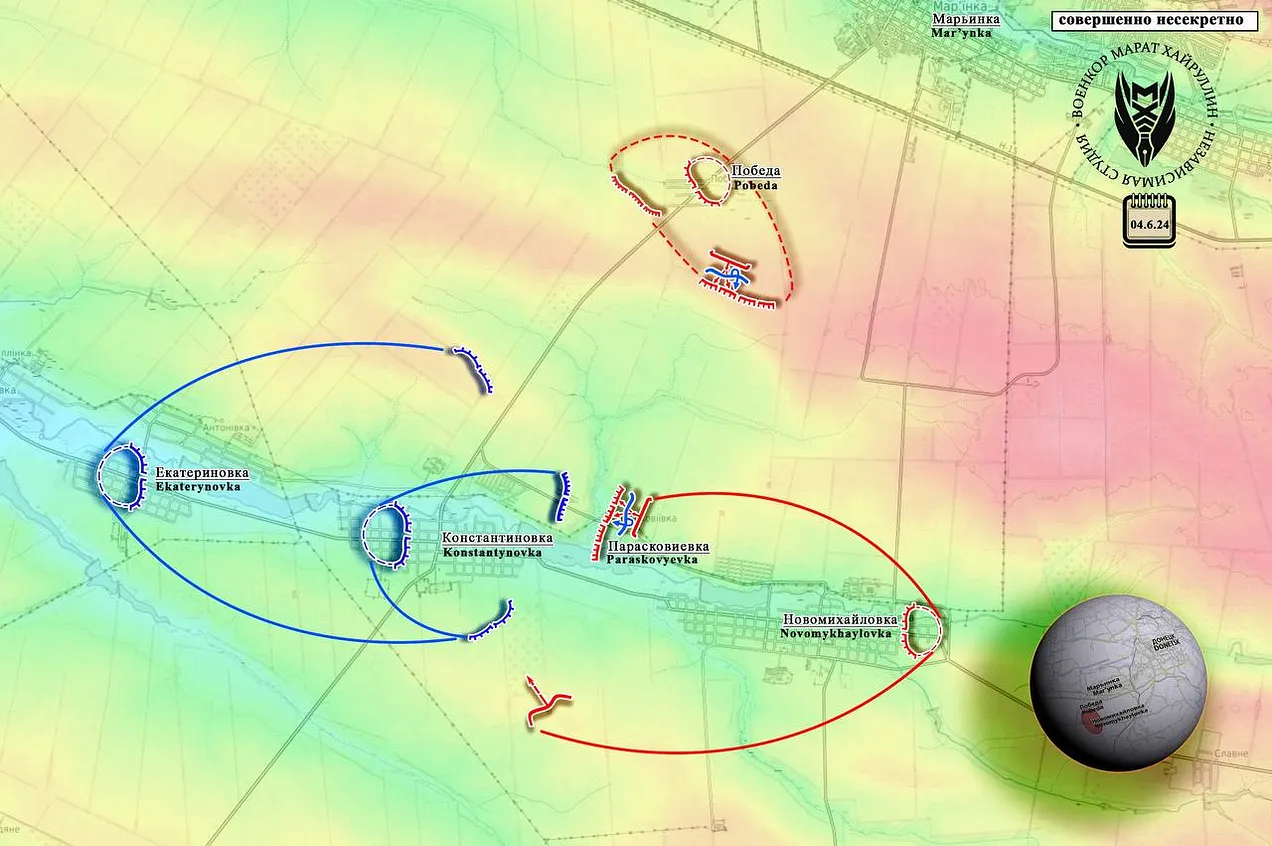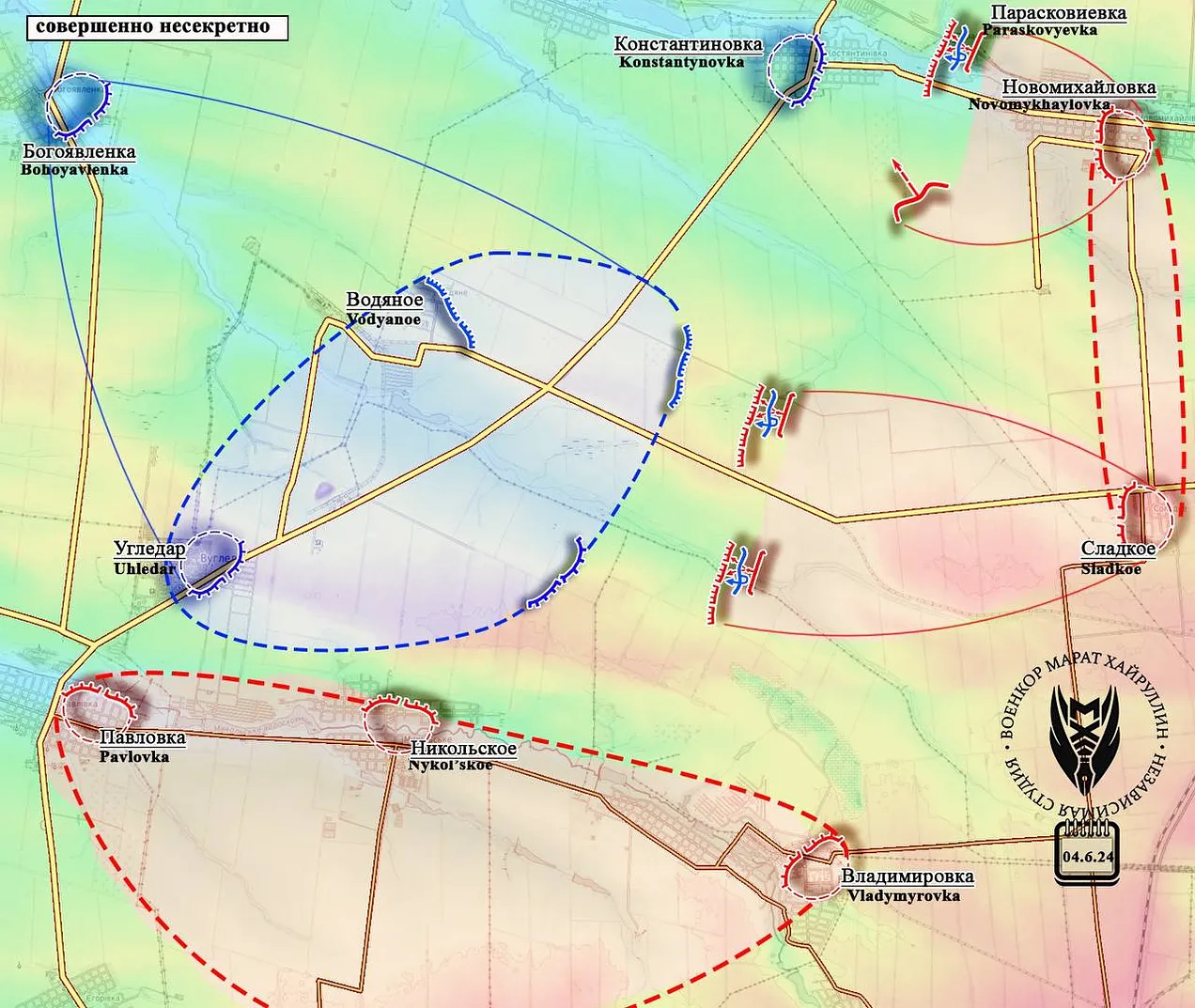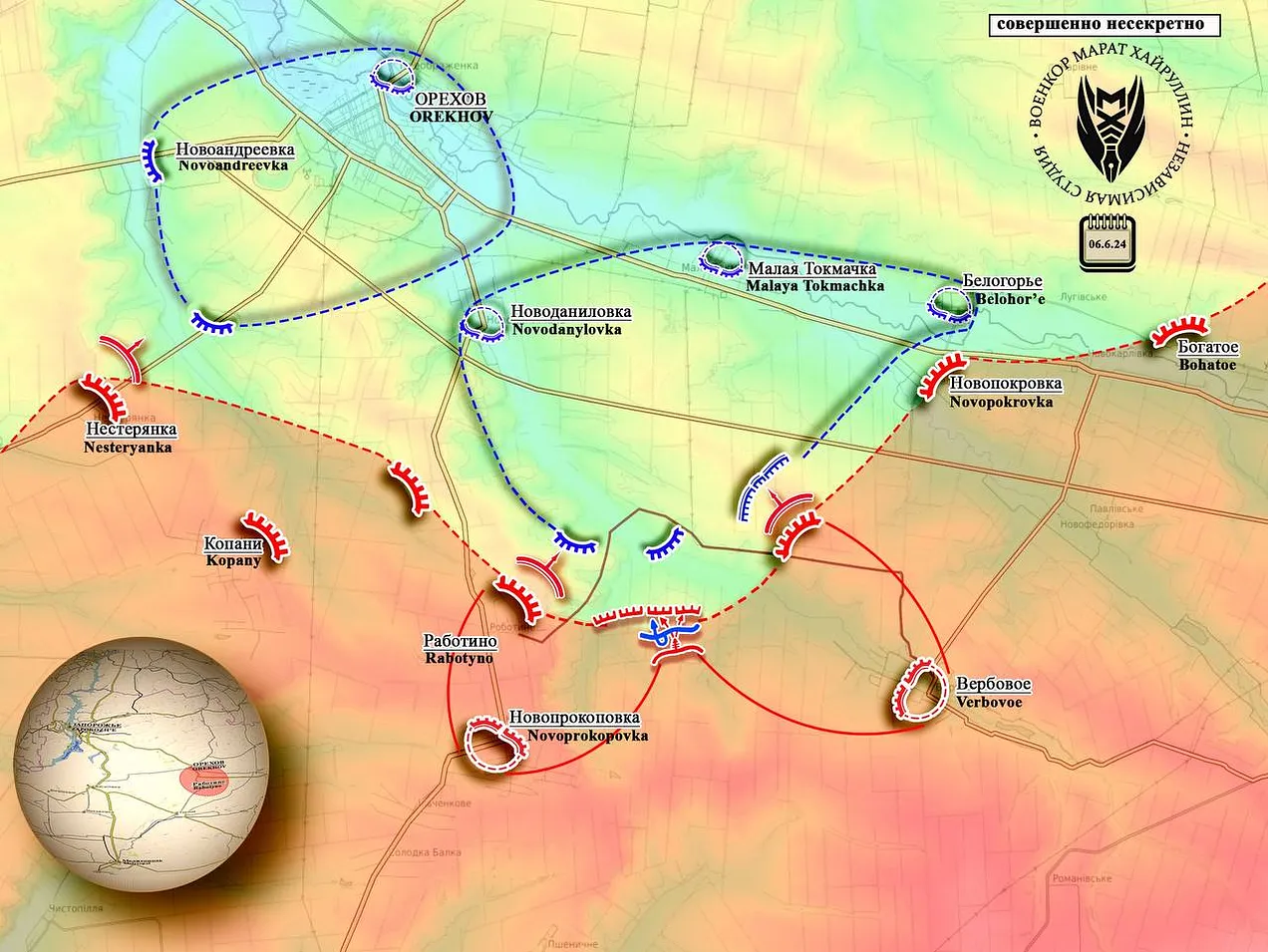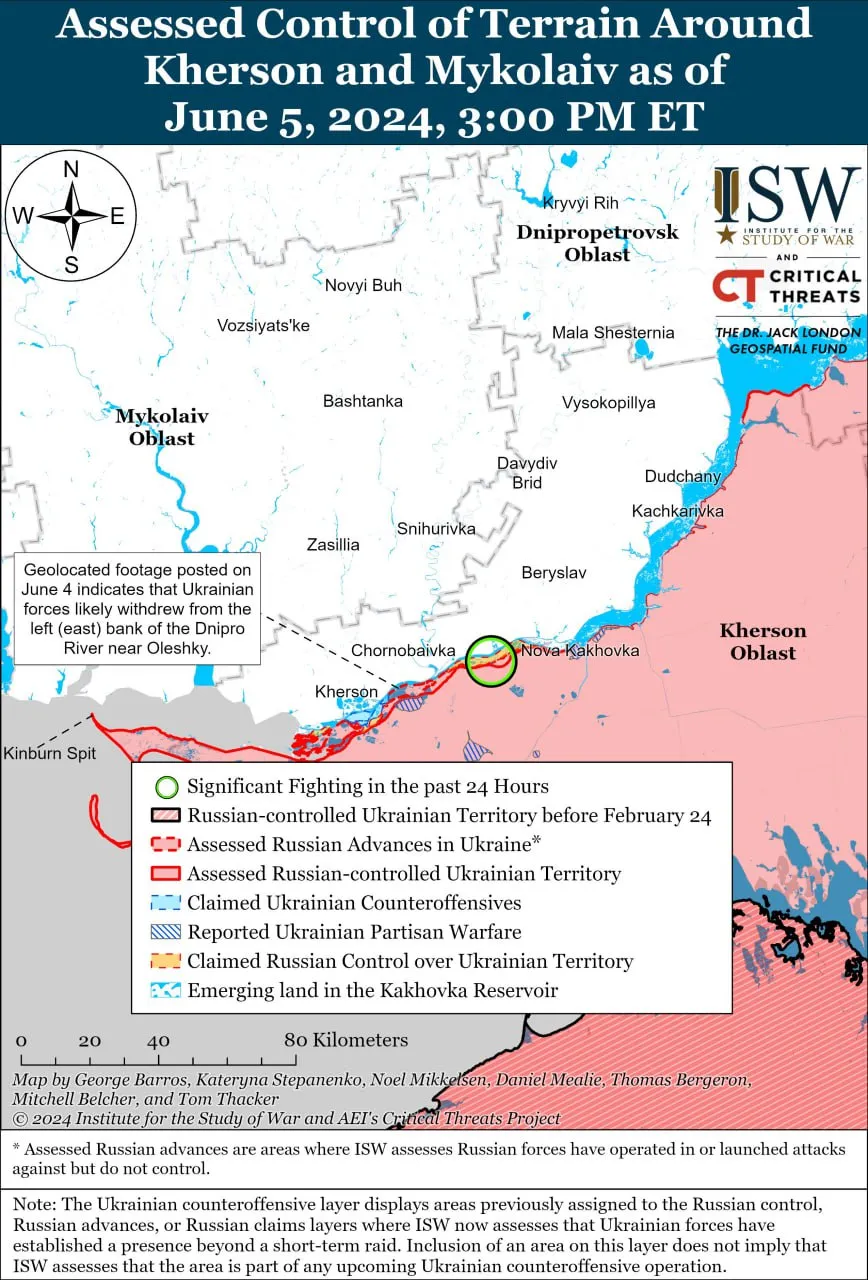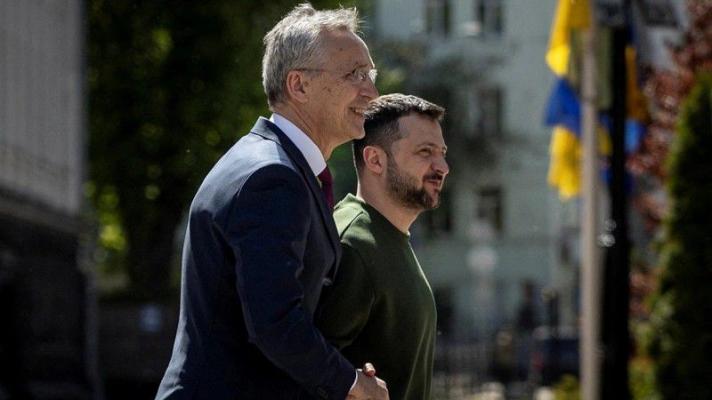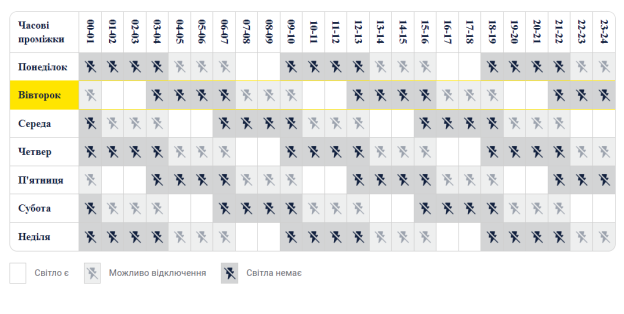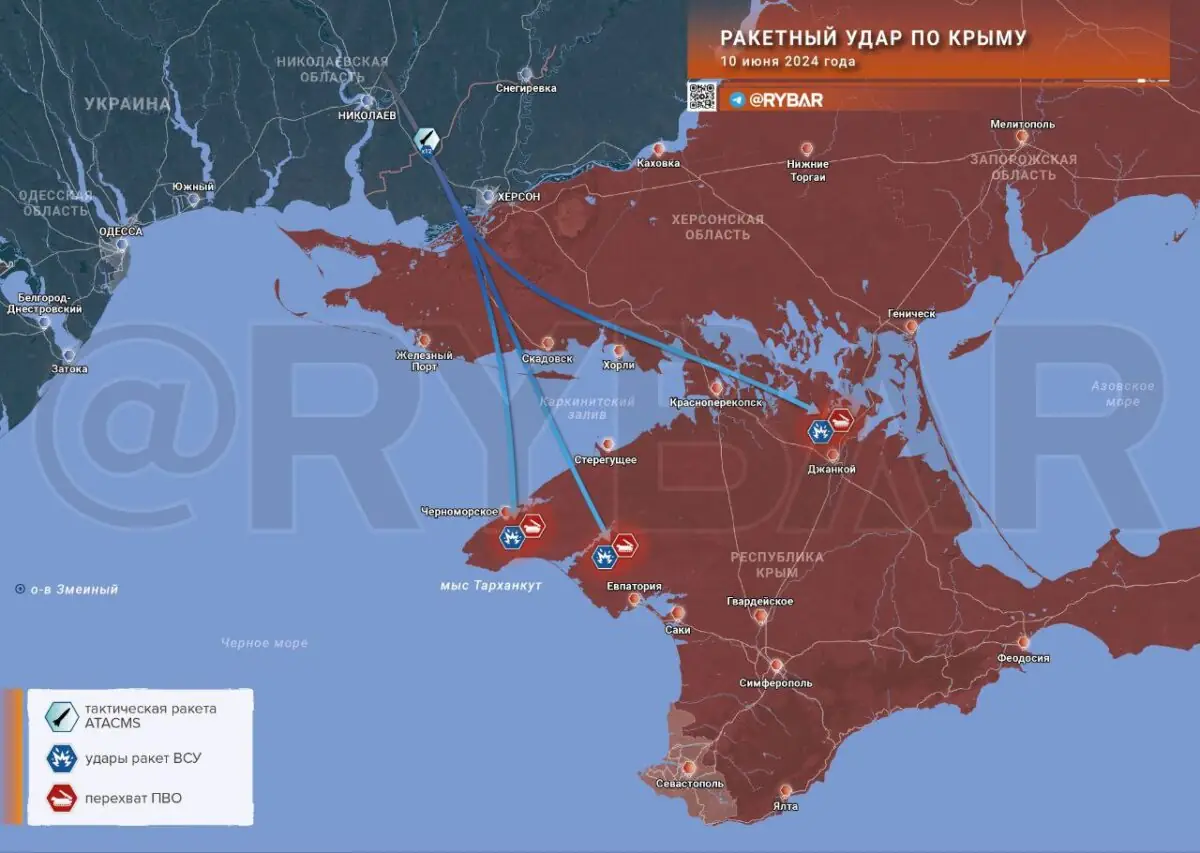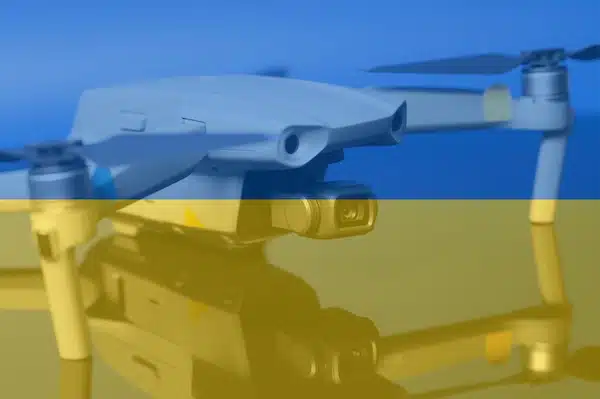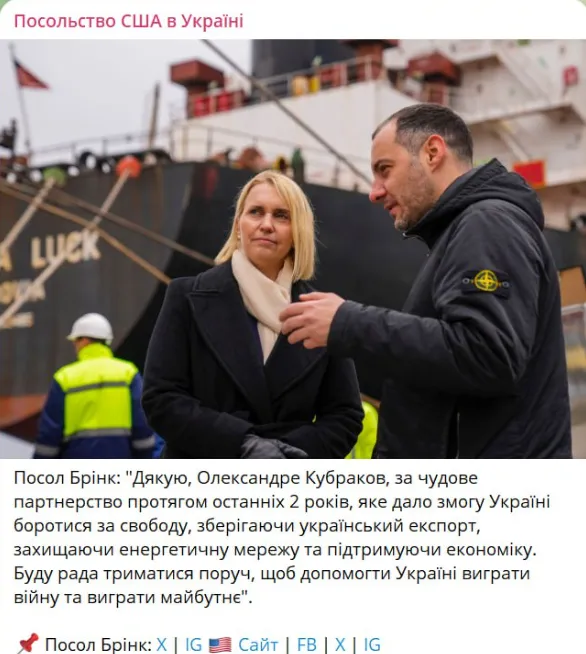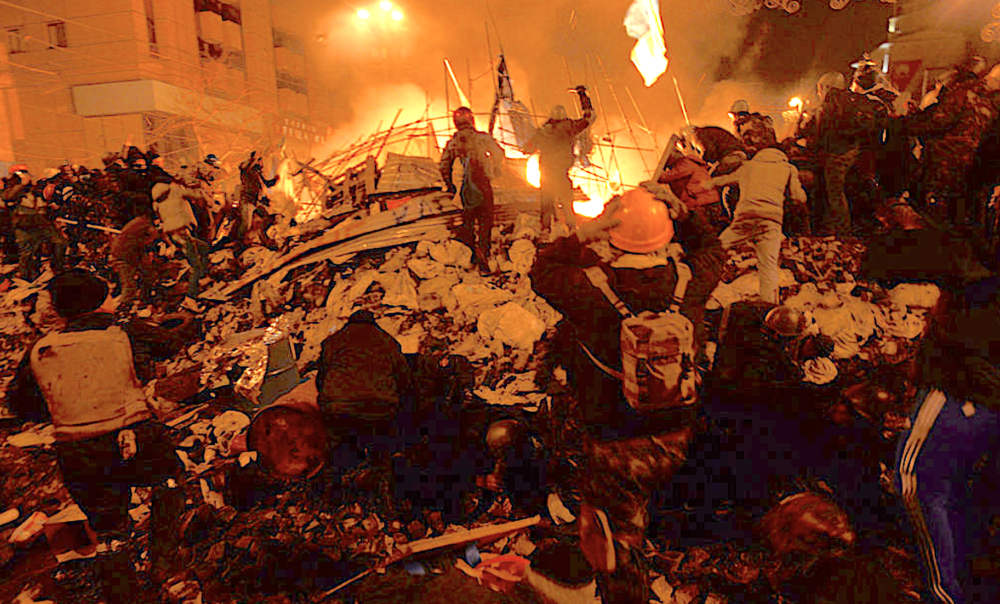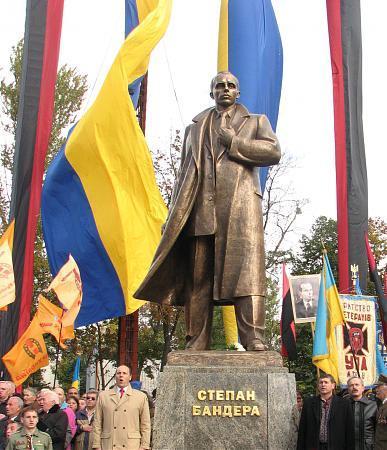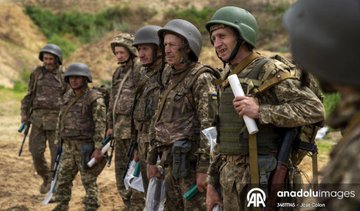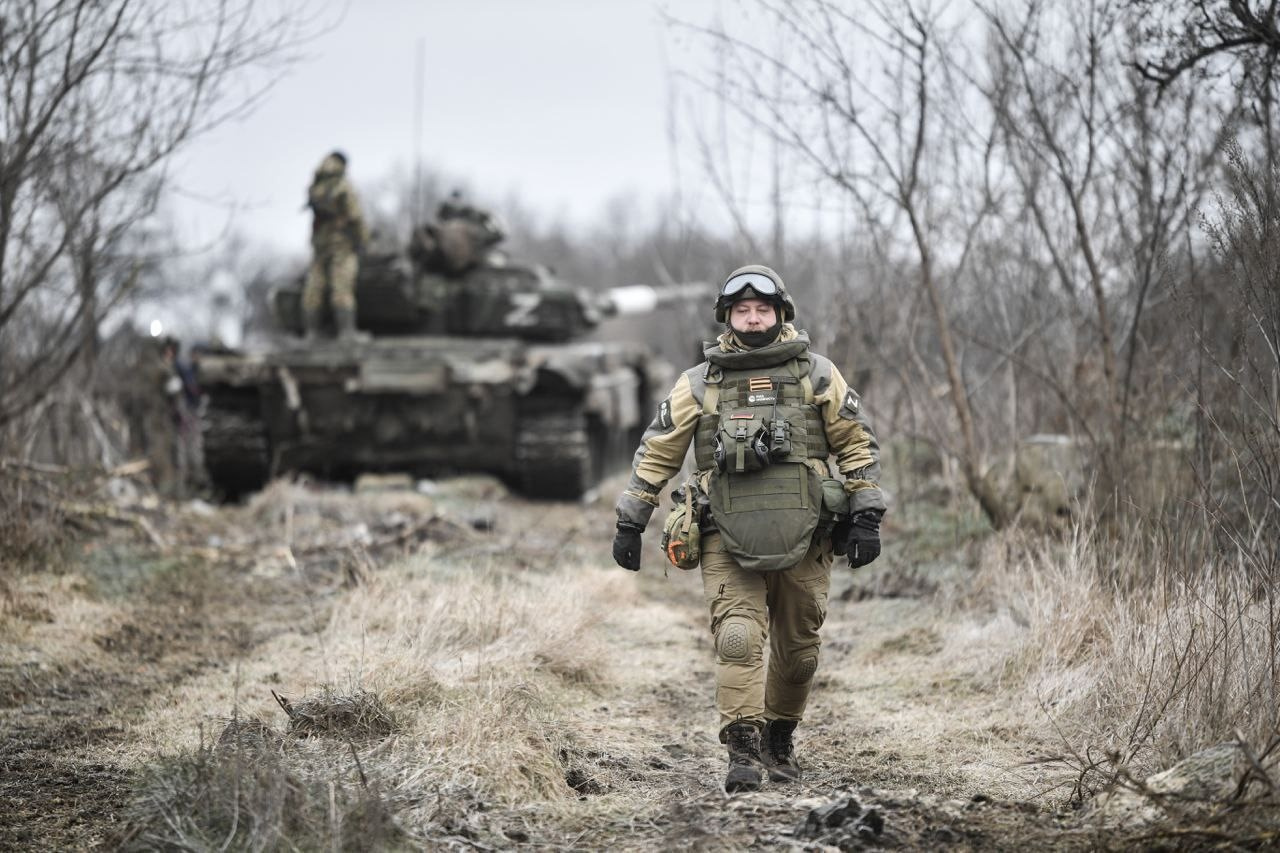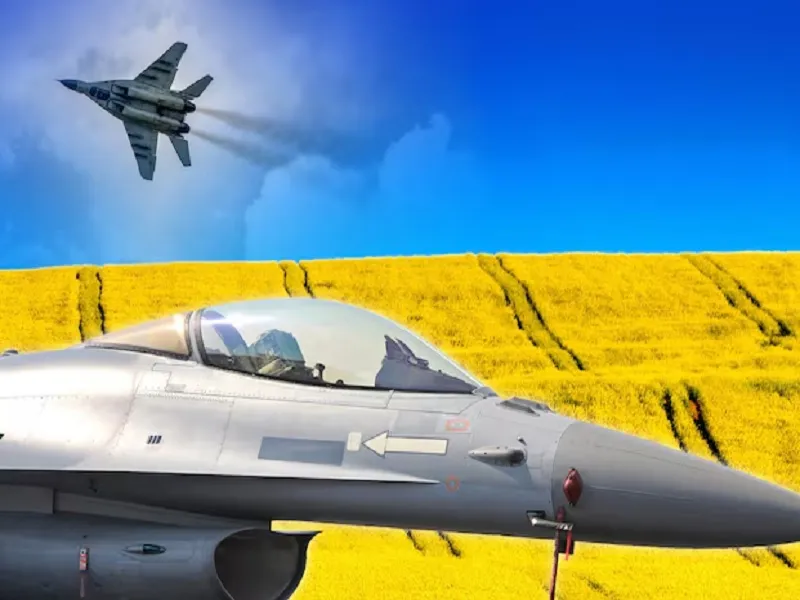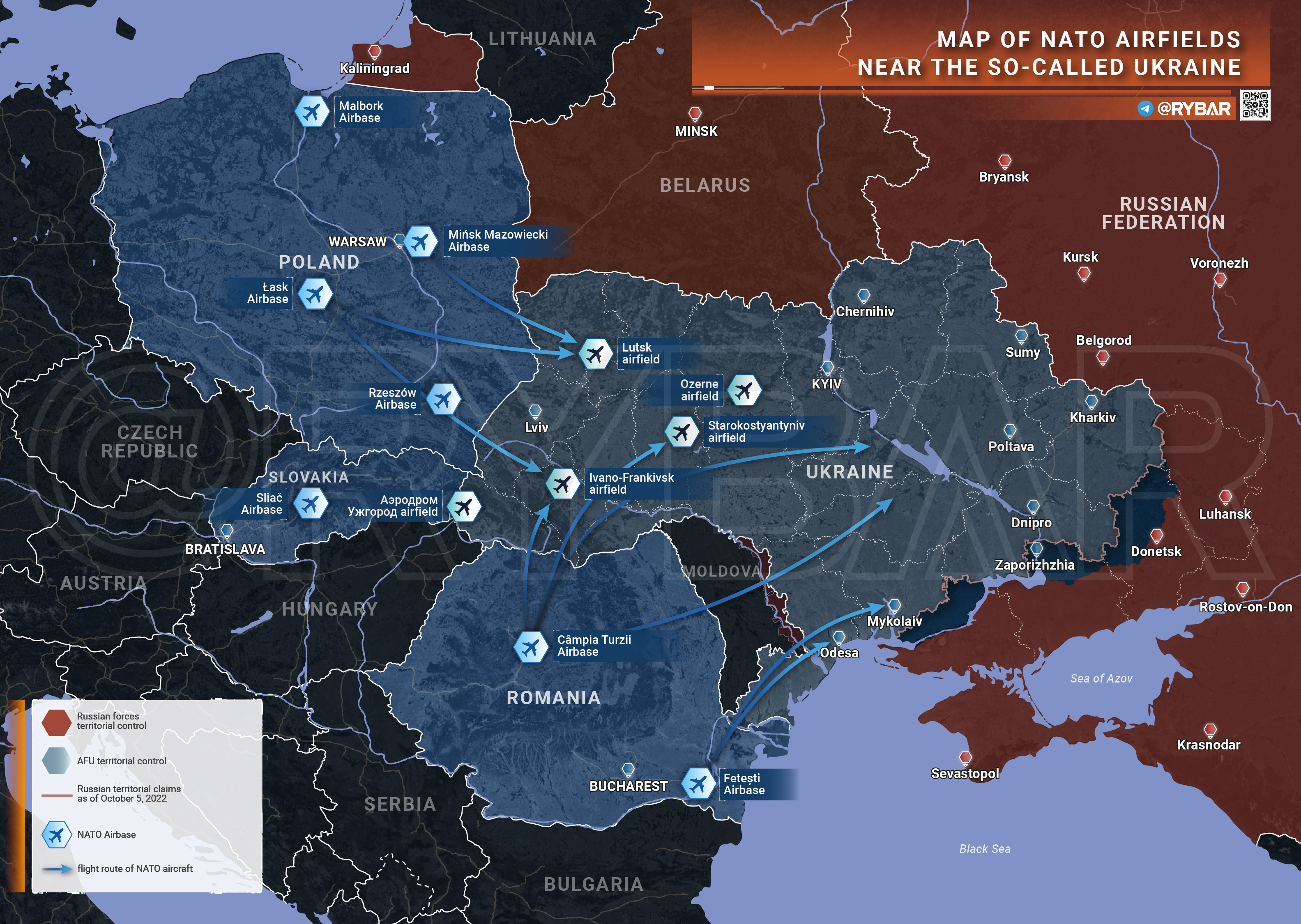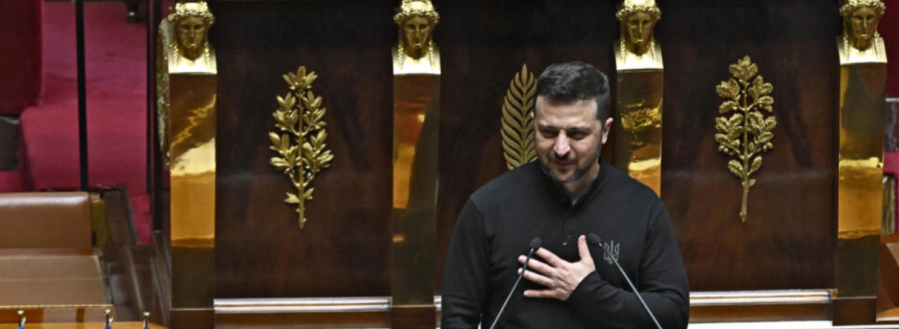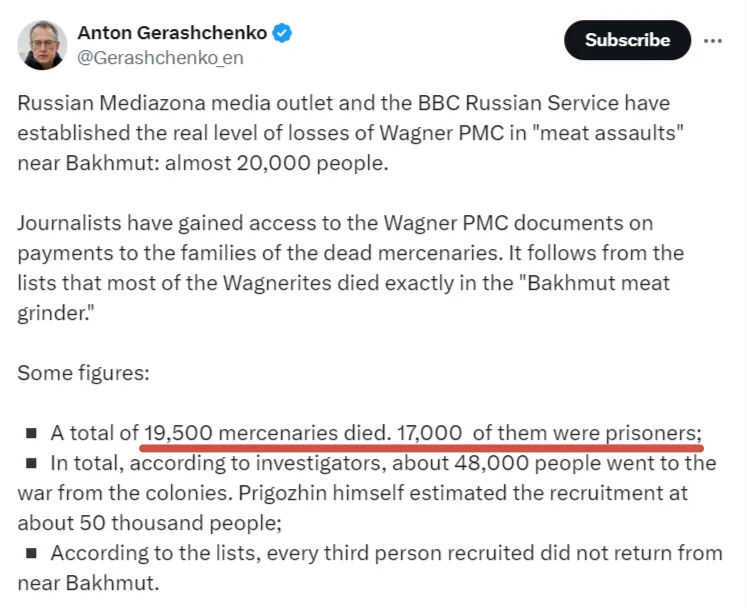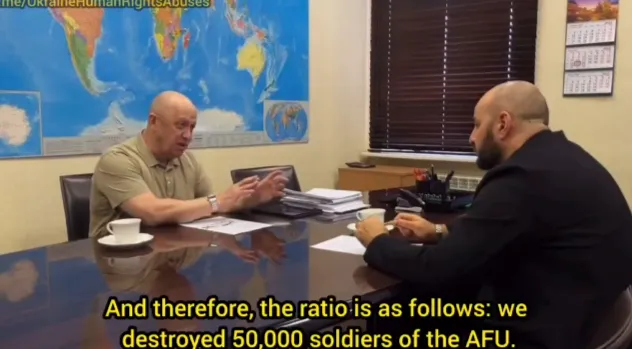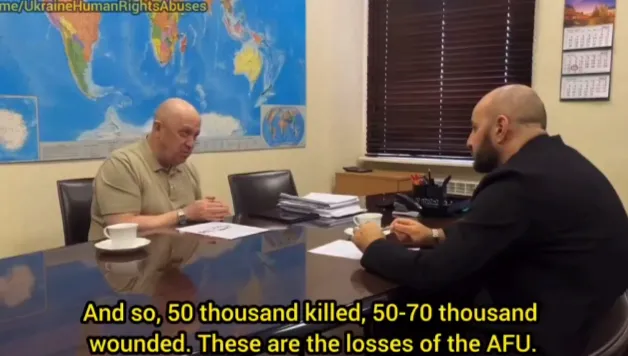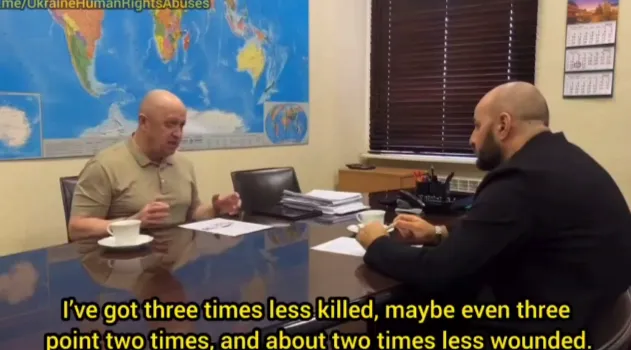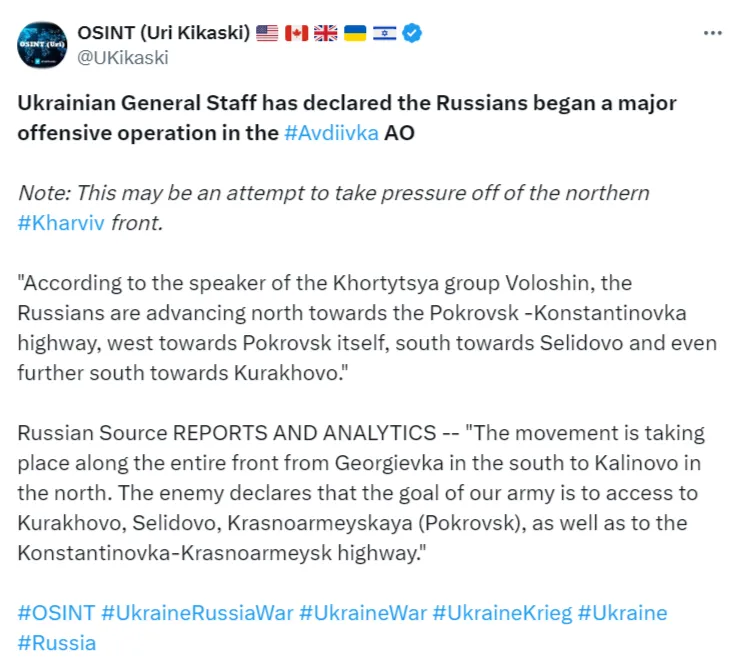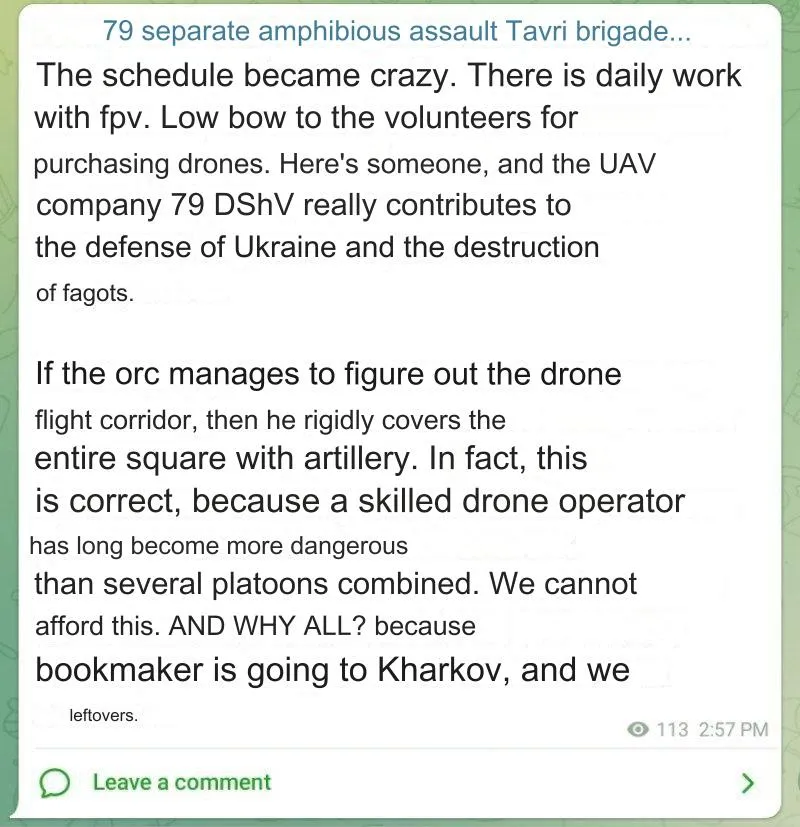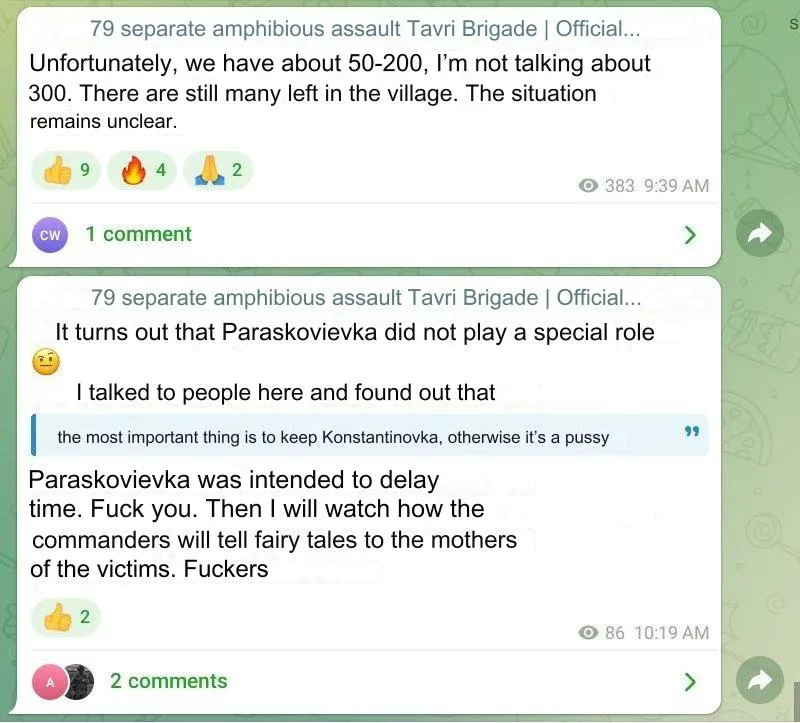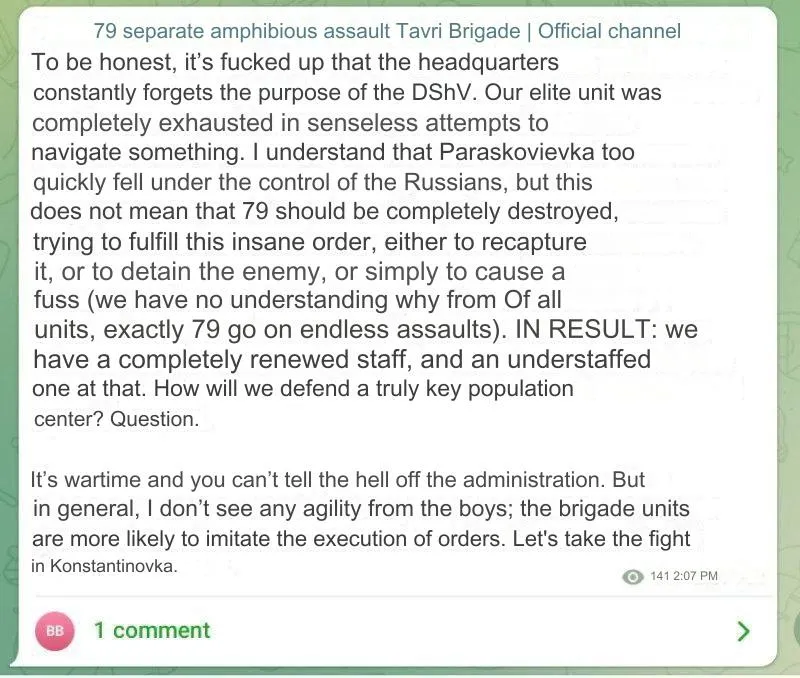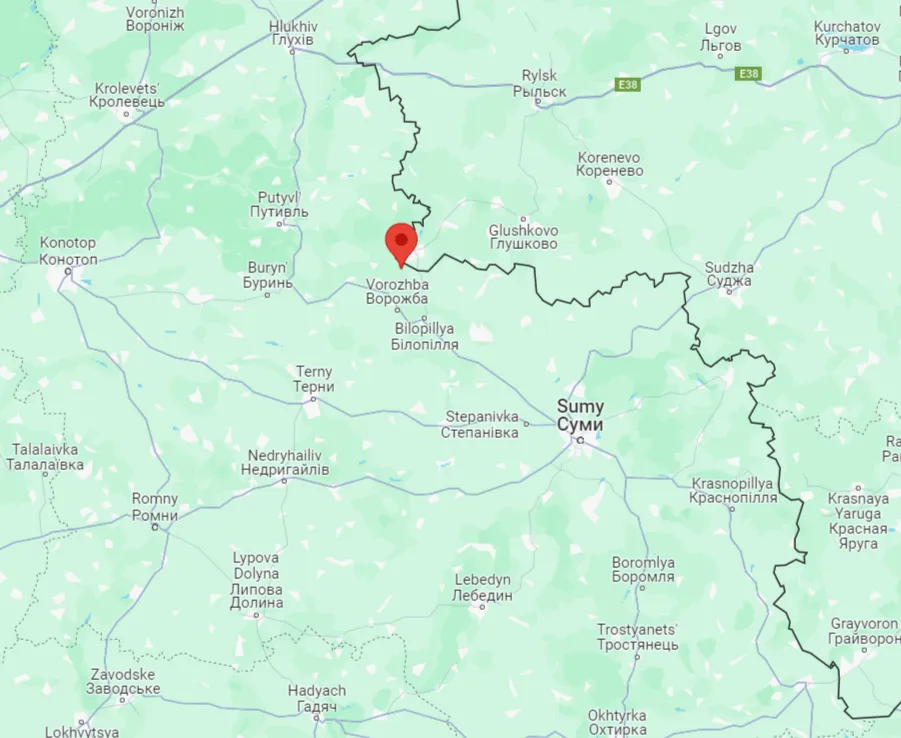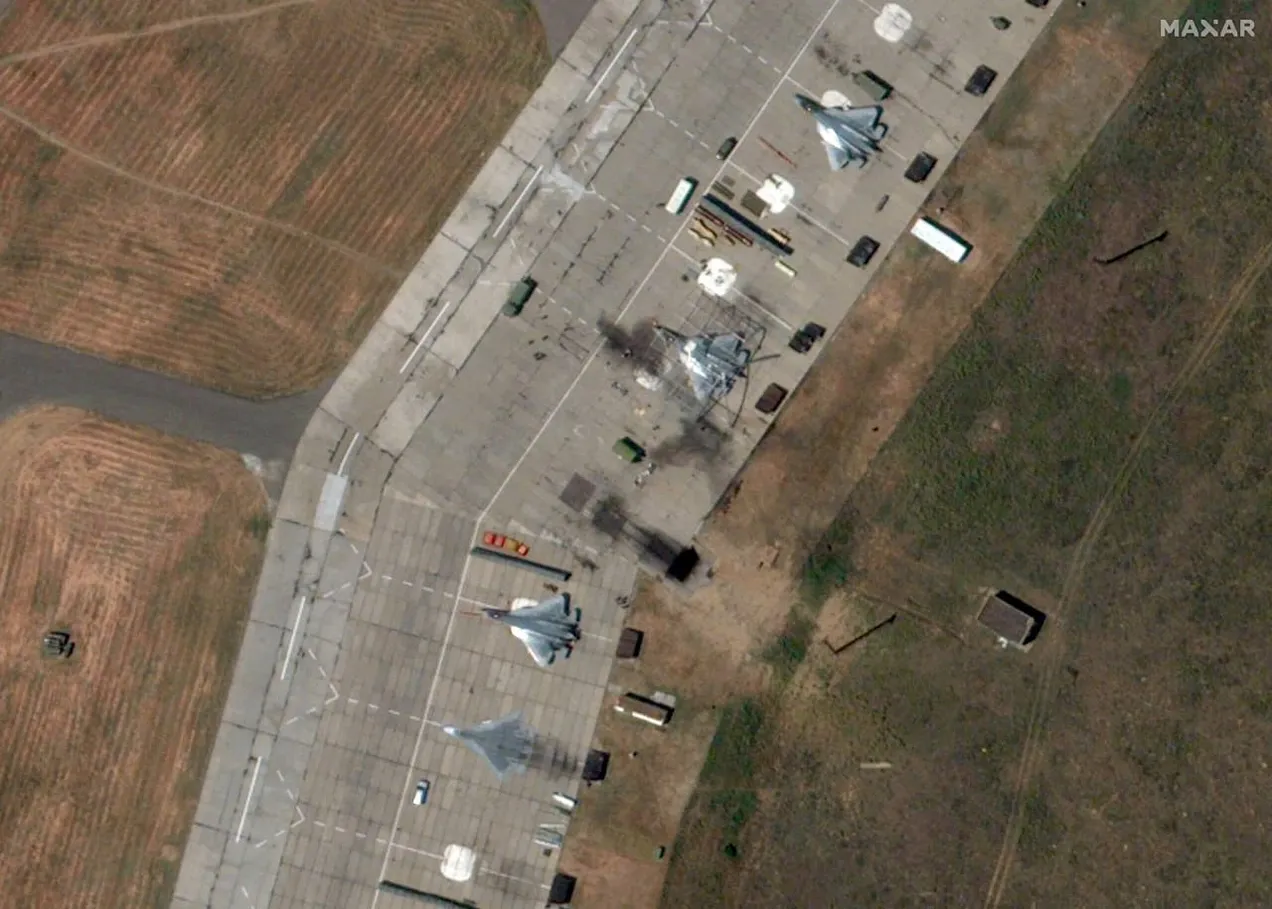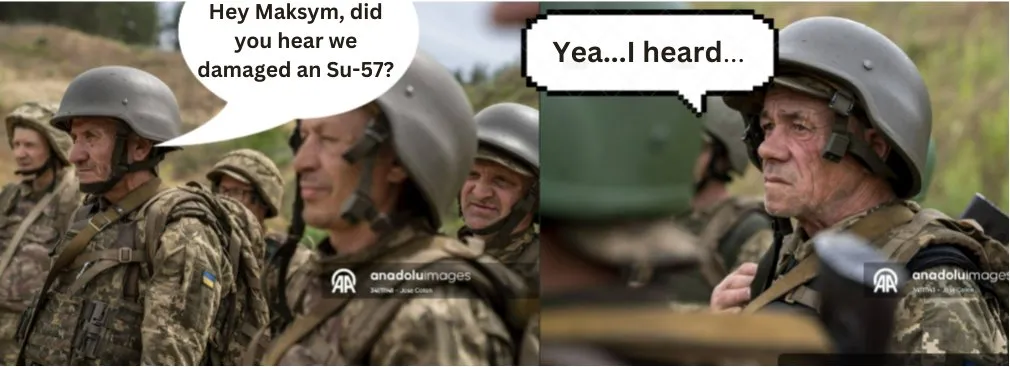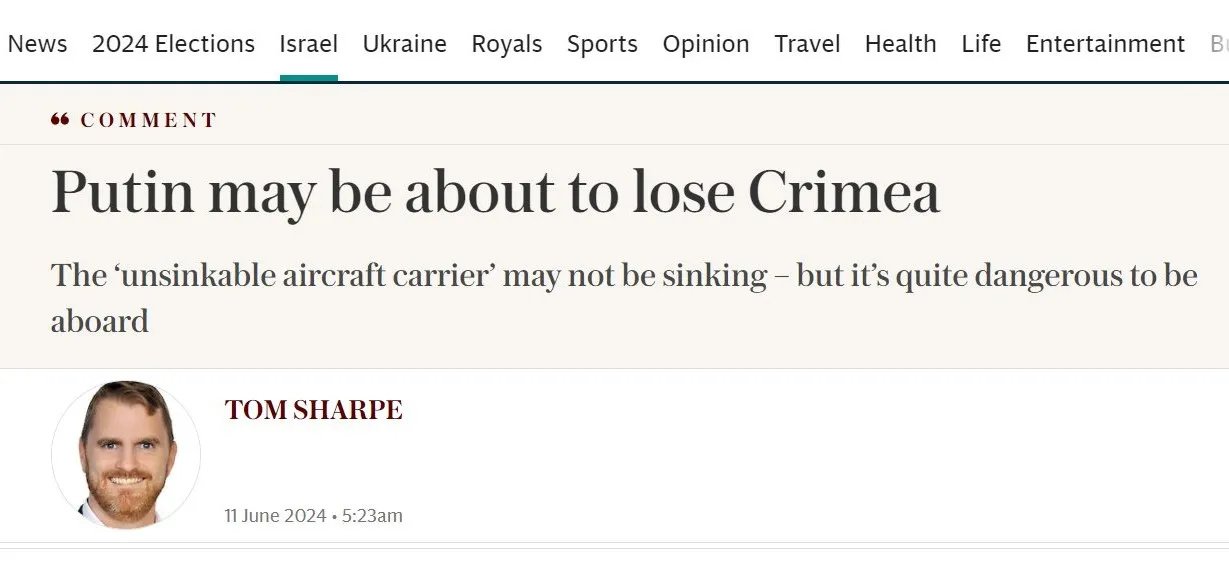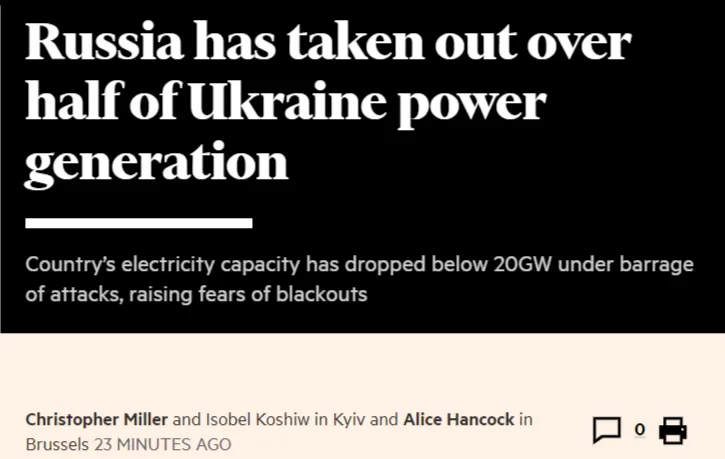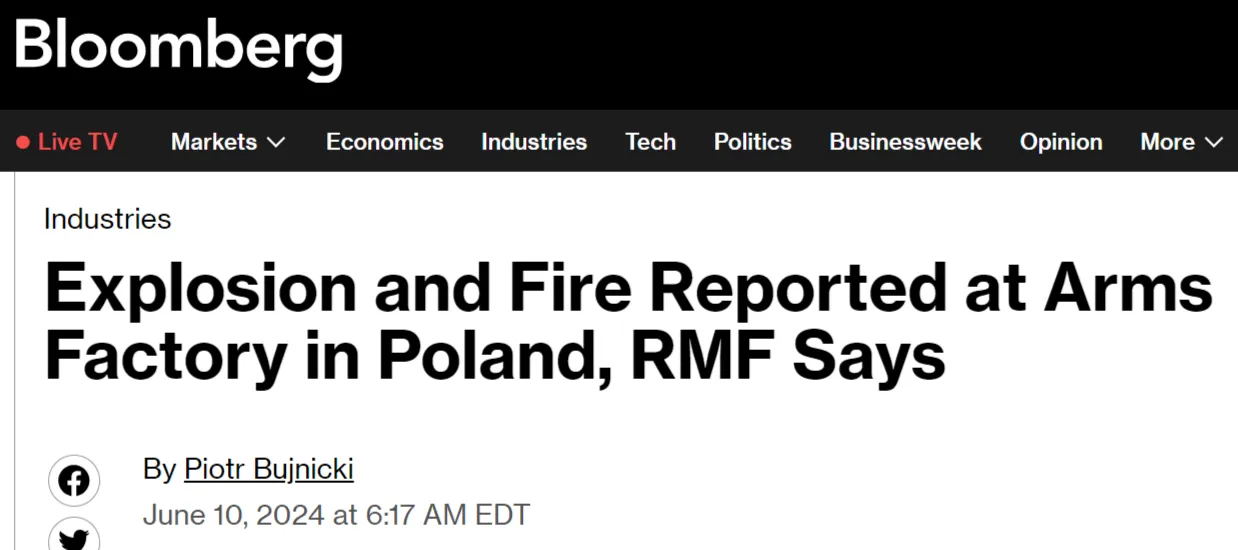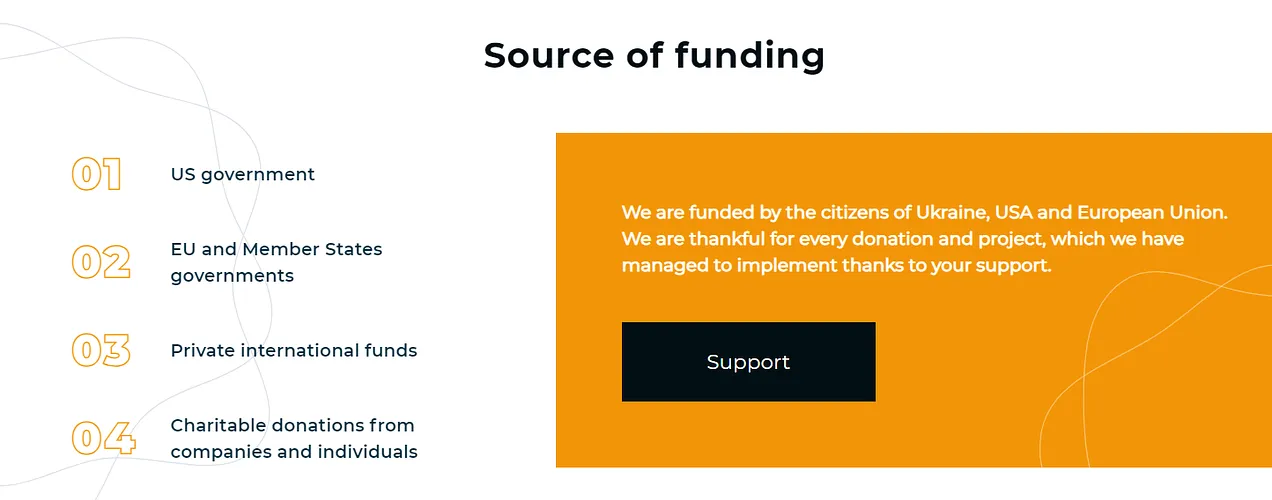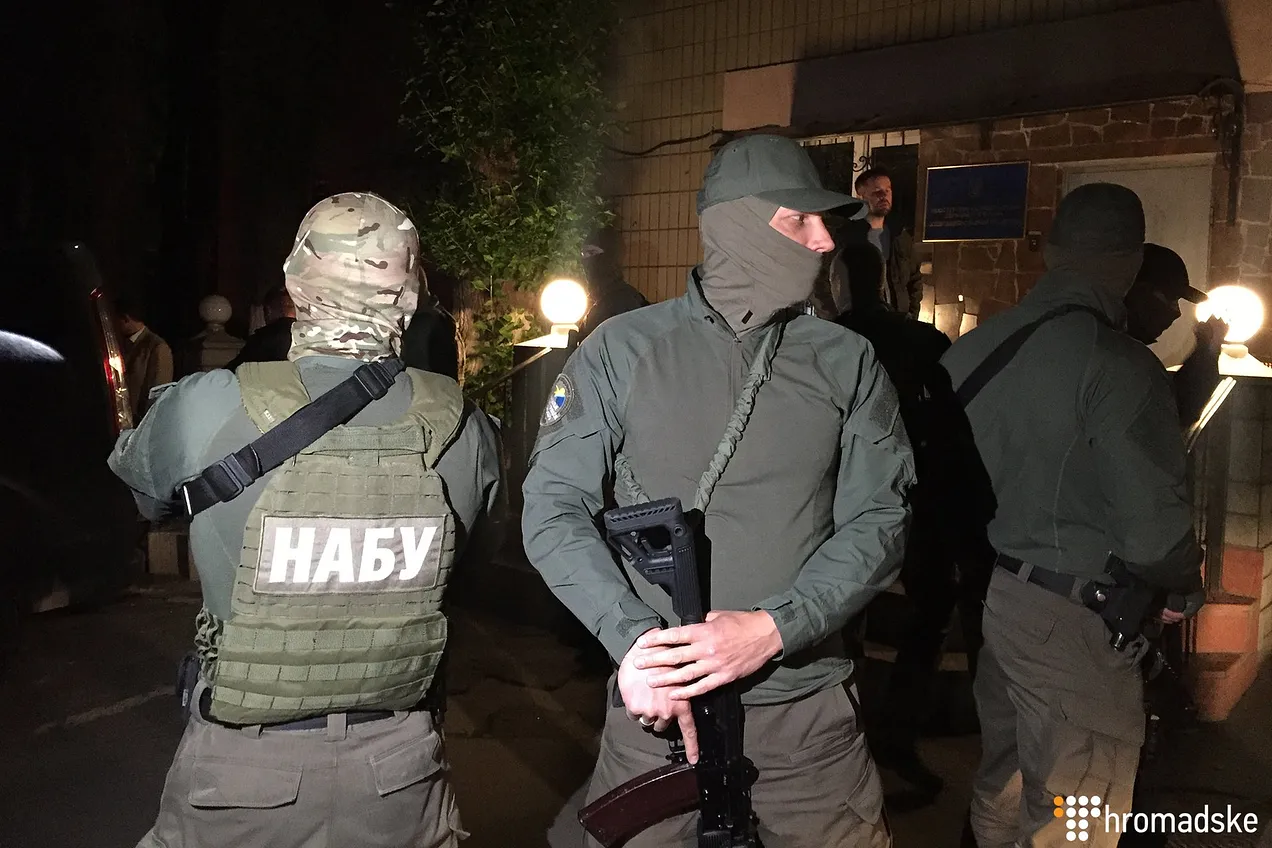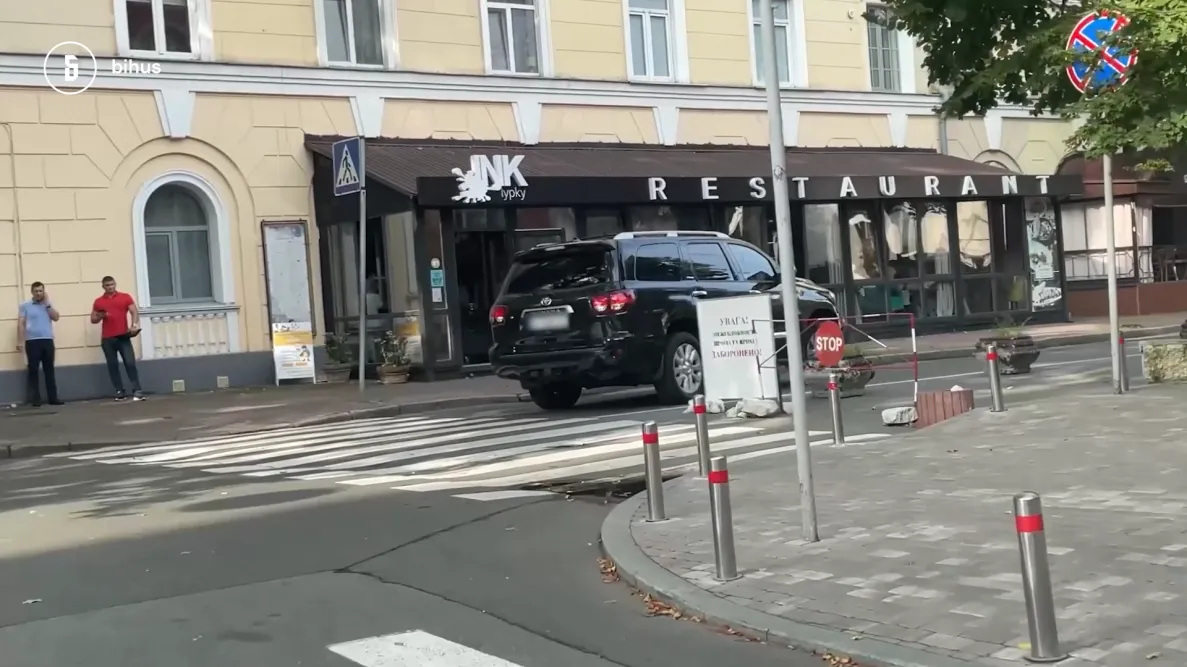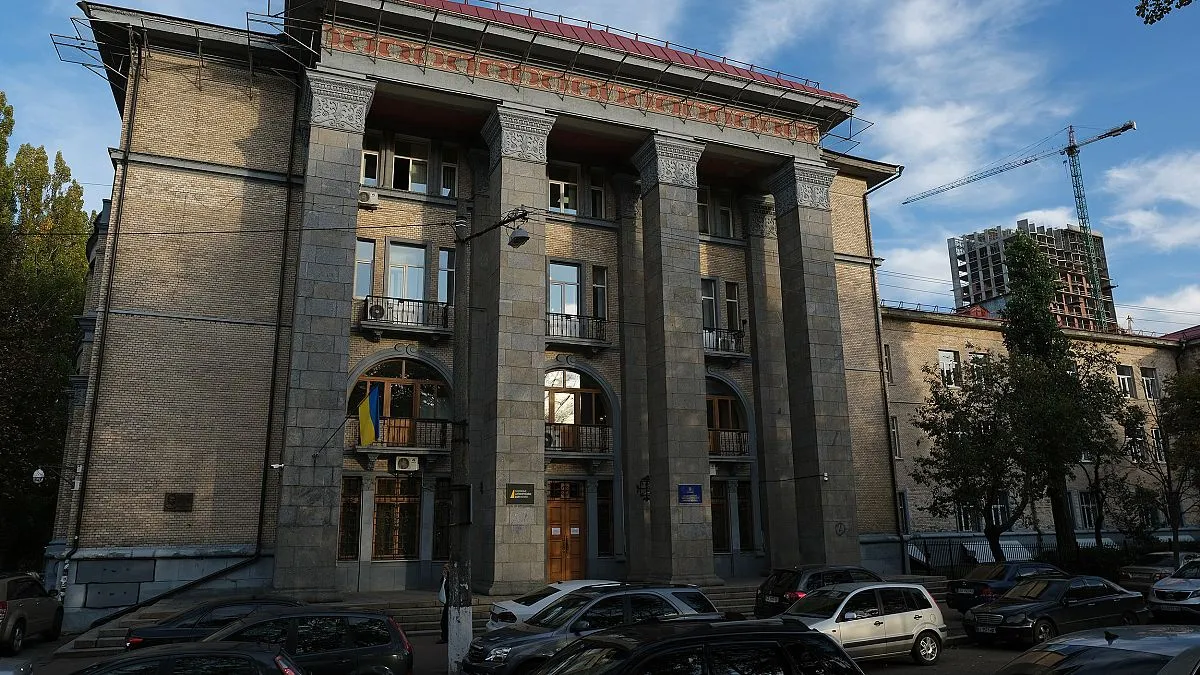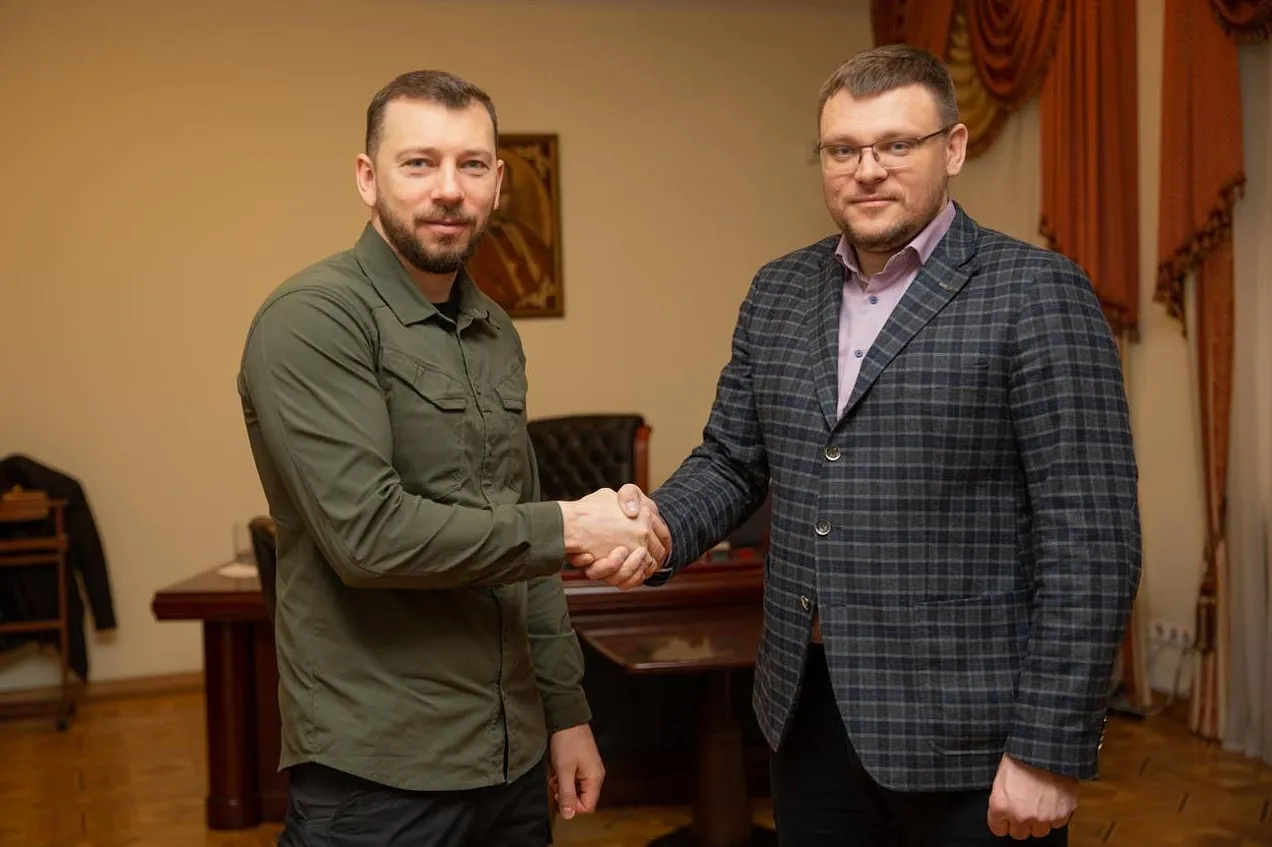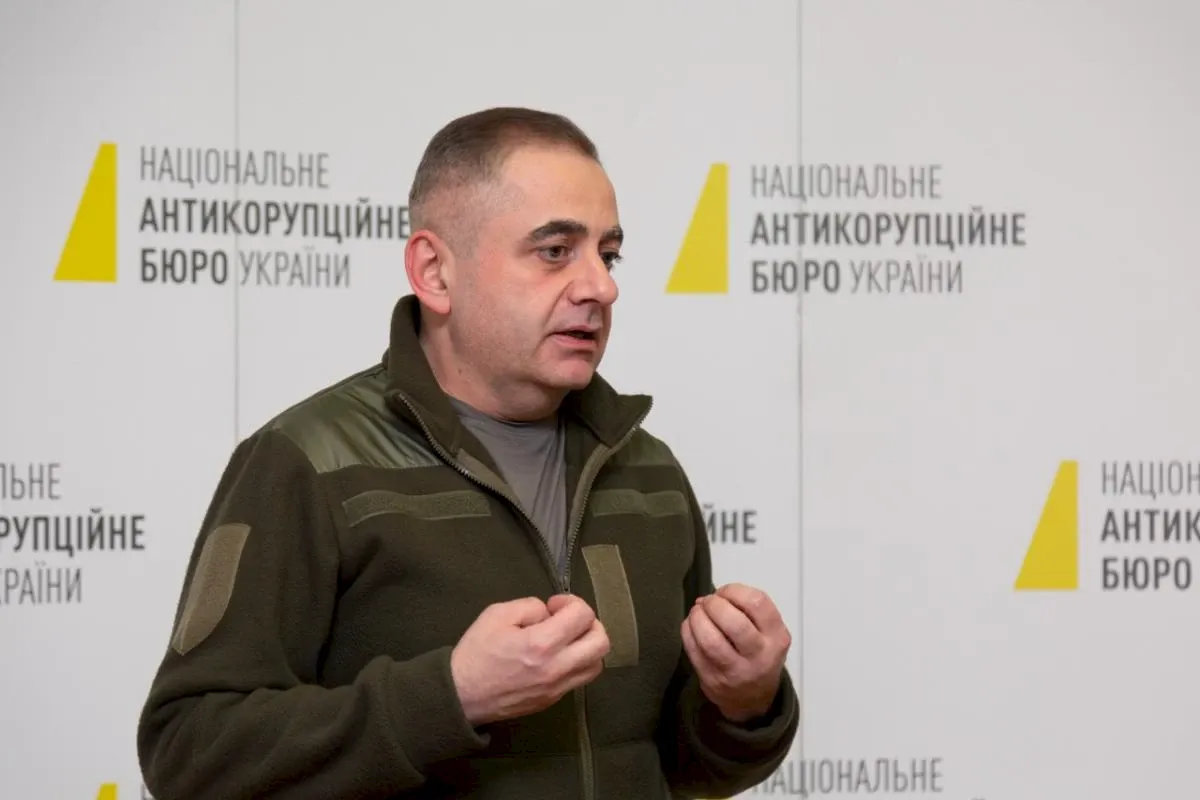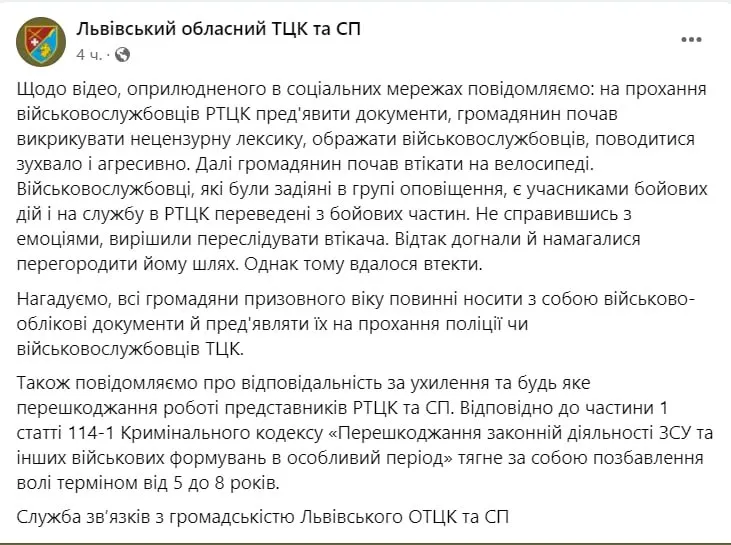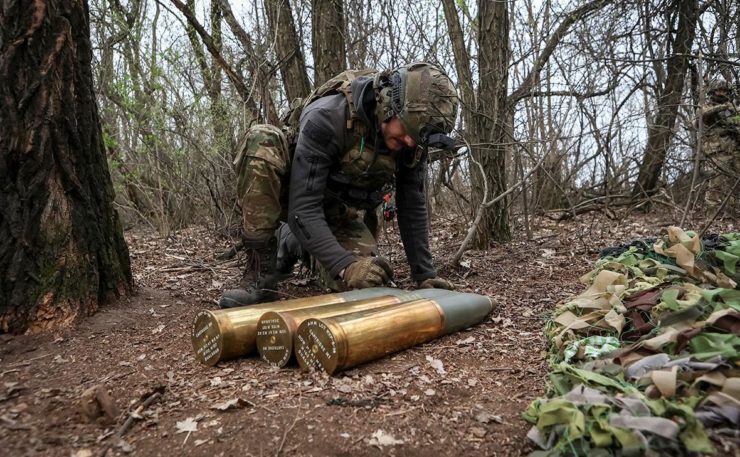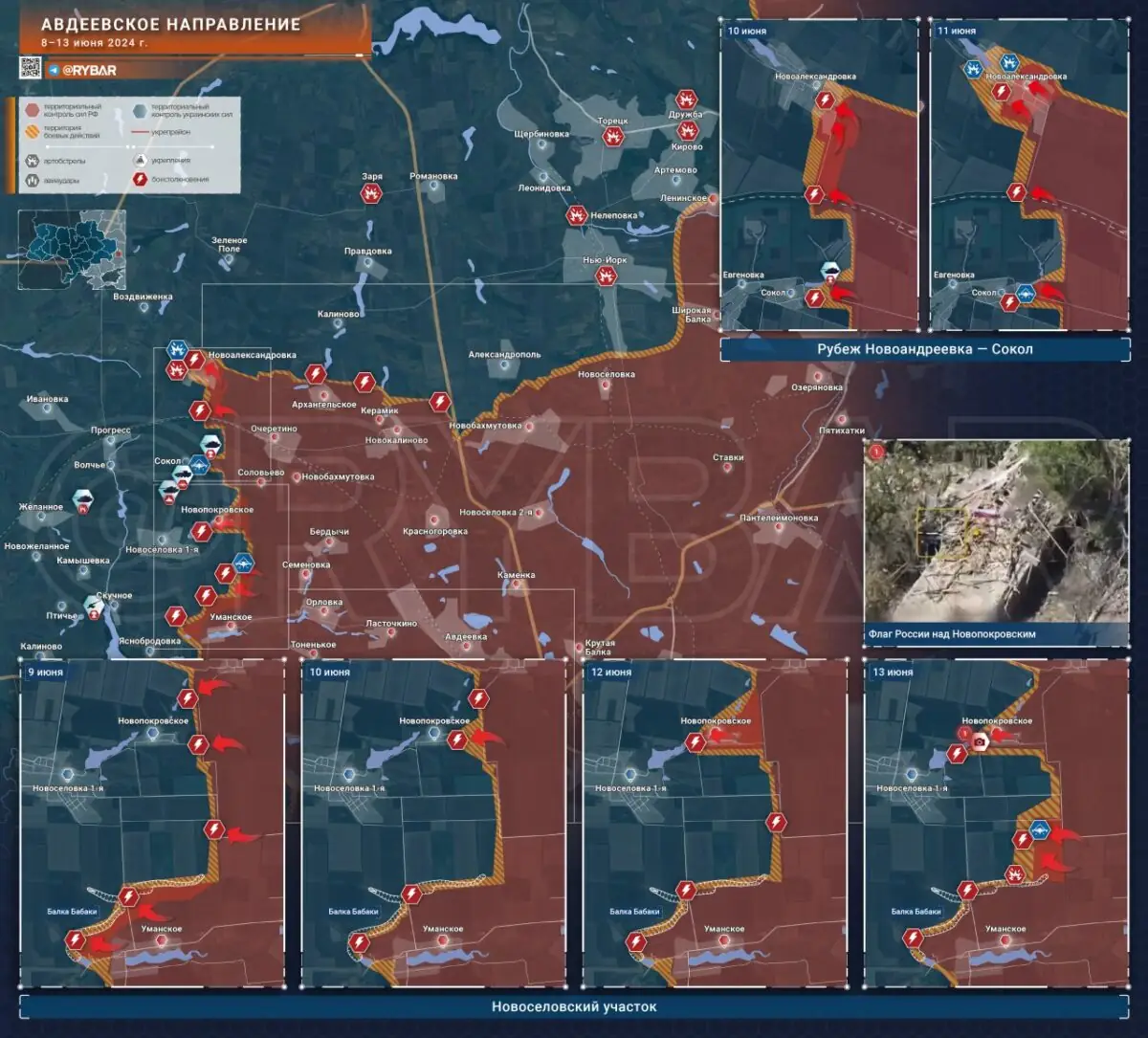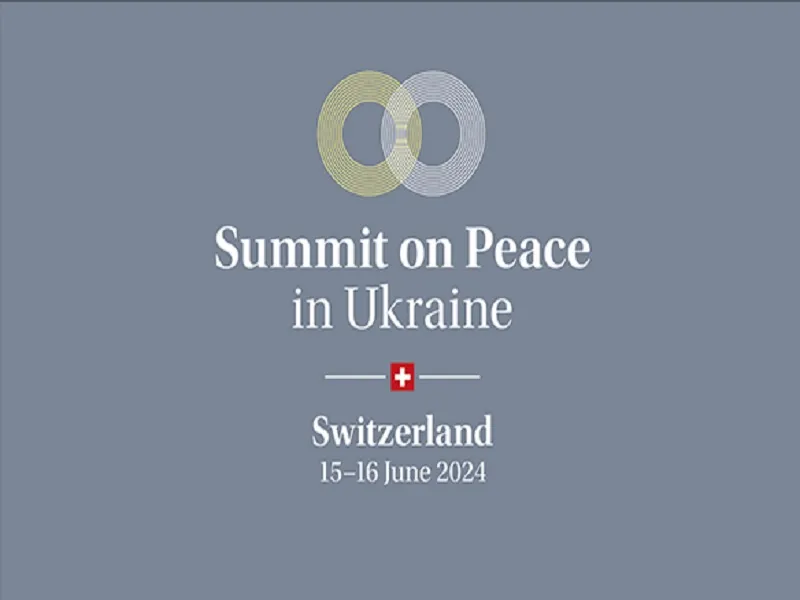POSTED BY @NSANZO ⋅ 06/05/2024
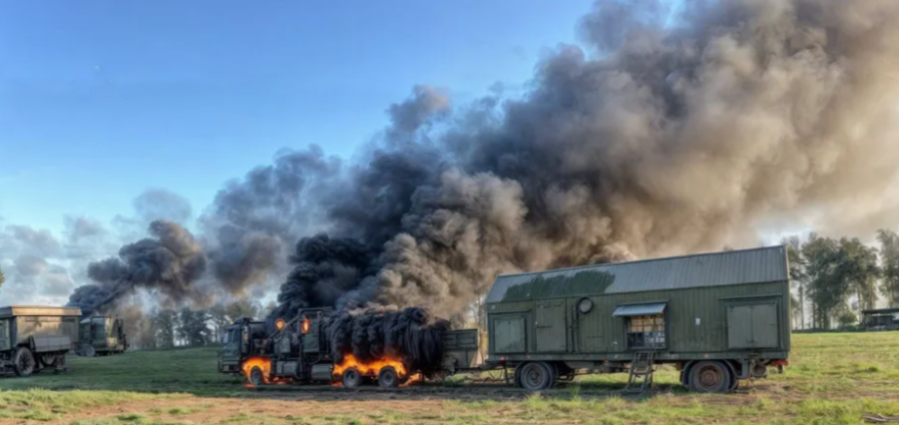
“Over the past five days, President Biden has staged a very public demonstration of the difficulties of managing two of the United States' most difficult allies, the President of Ukraine, Volodymyr Zelensky, and the Prime Minister of Israel, Benjamin Netanyahu. ", two key countries that the President has committed to defend, as long as necessary," The New York Times wrote yesterday to highlight the two foreign policy issues that are marking the current election year. Unlike on previous occasions, in which domestic politics absolutely dominates the campaign and pre-campaign, on this occasion, the two wars in which the United States participates as the main supplier of military material and diplomatic support mean that the international agenda is being a of the bases of the political discourse of the electoral year. In the week in which Biden tries to promote his ceasefire proposal for Gaza and travels to Europe to commemorate - without the presence of Moscow, an essential ally at that time - the 80th anniversary of the Normandy landings and sign a bilateral security agreement With Zelensky, foreign policy dominates the media agenda.
The two ongoing wars and the possibility of a conflict in Taiwan not only mark Joe Biden's political agenda at the moment, but, judging by the media discourse, also the state of American hegemony. The current president's more than three years in office have called into question his “vision of American leadership,” Time magazine writes this week in an extensive report that, from a legitimizing point of view, presents the difficulties facing has faced the current administration. “Alliances have not been enough to win a new European war in Ukraine. The power and influence of the United States has not prevented a humanitarian catastrophe in the Middle East, marked by alleged war crimes. Putin is trying to assemble an axis of autocrats from Tehran to Beijing. “In China, the United States faces an adversary potentially equal to it in economic and military power, who is determined to overthrow the American world order,” the outlet writes, always exonerating the United States of any responsibility in the creation or development of the different conflicts and creating a collective enemy in the form of a Moscow-Beijing-Tehran axis based on relations on the rise, but which in no way can be considered an alliance.
Much more critically, “is Biden screwing up in Gaza and Ukraine?” asks Foreign Policy in a dialogue in which one of the analysts, Emma Ashford, attacks the American position, which she sees as dangerous, especially in the Ukrainian issue following the authorization for the use of US weapons against targets in the border area of the Russian Federation. Just yesterday, Ukraine claimed responsibility for the first attack using Western weapons on the territory of the Russian Federation. The objective has not been one of the military bases, but a Russian air defense system, less ambitious, although equally painful for Moscow. With this, Ukraine joins Russia in the hunt for these types of systems, essential when shooting down the opponent's drones and missiles. The fact that Ukraine has managed to reach some of the elements that make up an S300 system implies that kyiv has, as expected considering that it receives information in real time from its British and American allies, intelligence to detect its targets and also of the weapons with which to attack those points. It is expected that air defense in the Belgorod region, where the first attack occurred, will be one of the main objectives of the Ukrainian HIMARS, a form of preparation for possible subsequent attacks against the military bases from which the aviation operates Russian.
At the moment, the general situation on the front has not changed. So much so that one of Ukraine's leading media outlets, The Kyiv Indepent, wrote yesterday that "as the situation in the Donetsk region worsens and resources remain scarce, exhausted Ukrainian units are being dispersed to the front every ever greater.” “With all eyes on Kharkiv, Russian troops take one Donbass village after another,” the media headline, which underlined the danger to the town of Chasov Yar and especially the supply route to that critical point.
The certainty that permission to attack Russian targets close to the border between the two countries will not change the development of the war, although it will probably make Russian logistics more difficult and increase the cost for Moscow, makes Ukraine, its allies and the related press have already begun to try to eliminate the following red lines. kyiv is now demanding permission to attack military bases far from the border to have the weapons with which to try to destroy Russian strategic aviation, while its allies and several articles published this week refer to the possibility of lifting the veto on sending troops. . In both cases, these are dangerous escalations that would imply even greater Western involvement in the war, increasing the risk that Russia will consider that a war against an army armed and financed by the West, which also provides intelligence in real time, directs operations, participates in the use of missiles against the territory under its control (and perhaps soon over the internationally recognized territory of the Russian Federation) is, in reality, a war in which its opponent is not Ukraine but the collective that uses that army as a proxy.
This perception is also beginning to appear more and more frequently in the press. The New York Times , for example, states that “privately, Biden's advisers admit that American and Ukrainian priorities are divergent.” Recently, the United States had been upset with Ukraine for its attacks on refineries in the Russian Federation. The argument was twofold: to the risk of escalation by Russia, which effectively reacted by notably increasing its attacks against Ukraine's electricity production infrastructure, we had to add the danger of an increase in the price of oil worldwide, something that the House Blanca tries to avoid it for electoral reasons. Ukraine reacted to the complaints with blackmail: kyiv would continue attacking these infrastructures, since it did not have enough Western weapons to defend itself. American reluctance translated into more weapons and Ukraine temporarily ceased its attacks on refineries to begin attacking much more sensitive targets for Russia.
“At this point, Ukraine has nothing to lose from an escalation of tension with Russia,” states The New York Times , which seems to see nothing in the destruction and human loss as anything to take into account. On the contrary, despite not suffering casualties, Biden still has something to lose: “within the White House, the obvious concern is that President Vladimir V. Putin will deploy nuclear weapons on the battlefield, trying to convince the world that if Ukraine continues to launch US-made bombs and rockets on Russian territory, he will not hesitate to use the ultimate weapon against Ukraine,” he adds. The West's nuclear fear has always entailed high doses of exaggeration that now must be qualified. The situation changes when kyiv's allies announce that Ukraine will be able to use F16s, with nuclear capabilities, against Russian territory and Ukraine makes early warning radars, part of the Russian nuclear shield, its objective.
That's Emma Ashford's argument in Foreign Policy . Despite agreeing that Ukraine can attack Russian points close to the border, the elimination of that red line only moves that barrier a few kilometers and possibly temporarily. “Many of these long-range attacks have occurred on facilities that are not as important to the Ukrainian war effort, and - like nuclear radar - can have other destabilizing consequences, whether in the nuclear space, on energy prices or in any other area,” he argues after explicitly stating that attacks on radars should stop. The part of Ashford's argument, which correctly understands that early detection radars for intercontinental missiles are not relevant to the current war, that he omits is that these objectives are relevant in weakening Russia in the event of a broader conflict. . In other words, they are relevant for Ukraine's allies, who, hand in hand with their kyiv subsidiary army, continue on the path of dangerous escalation. It is not about “sleepwalking towards climbing” as the analyst states, but rather taking conscious steps towards it.
Ukraine's allies are focusing their arguments to justify the attacks on Russia on kyiv's legitimate defense against external aggression, a thesis that is not valid for the Palestinian population, to whom no one offers systems to shoot down Israeli fighters. The speech prefers to forget the irresponsibility of leaving the decision to temporarily and territorially extend the war in the hands of the country that decided not to implement the only existing peace agreement in this conflict, considering that it granted excessive rights to part of its population. But we must not forget either that Ukraine pulls on its allies, demanding more and more weapons and more possibilities of using them within Russia, but it always does so in the face of Western reluctance that tends to be only formal and that disappears over time. The interests of kyiv and its partners remain perfectly aligned, guaranteeing an increasingly dangerous war.
https://slavyangrad.es/2024/06/05/pelig ... -continua/
Google Translator
******
Avdeevsky direction: advance of Russian troops
June 3, 2024
Rybar

To the northwest of Avdeevka, Russian troops systematically continue their offensive in a westerly direction, attacking simultaneously on several sectors of the front.
In the Arkhangelsk region , units of the Russian Armed Forces advanced north of the settlement, occupying an enemy stronghold and several forest belts to the east. At the same time, another large fortified area is under enemy control to the north-west of Arkhangelsk at a height beyond the Kalinov gully .
To the northwest of Ocheretino, Russian assault groups have entrenched themselves along several forest belts on the approaches to Novoaleksandrovka , on the eastern edge of which heavy fighting continues.
On the evening of June 2, unconfirmed information began to arrive about the capture of the village of Sokol, west of Solovyevo . In reality, Russian troops actually advanced towards the settlement and even carried out “reconnaissance in force”, reaching the center of the village, but later retreated back.
It was also possible to establish the configuration of the front line in other areas: as a result of the latest attacks, the Russian Armed Forces significantly advanced towards Novopokrovsky , and also significantly expanded the zone of control in the direction of Skuchny at the Berdychi-Orlovka line .
For a long time, the situation in these areas was covered in the “fog of war” due to a shortage of objective control personnel. This is especially true in relation to the enemy, who was clearly in no hurry to demonstrate the results of competent actions of Russian troops in the conditions of the difficult situation of the Ukrainian Armed Forces in the sector.
https://rybar.ru/avdeevskoe-napravlenie ... kih-vojsk/
Google Translator
******
Buried in Steel: Military Production & NATO’s Proxy War in Ukraine
Posted by INTERNATIONALIST 360° on JUNE 3, 2024
Brian Berletic
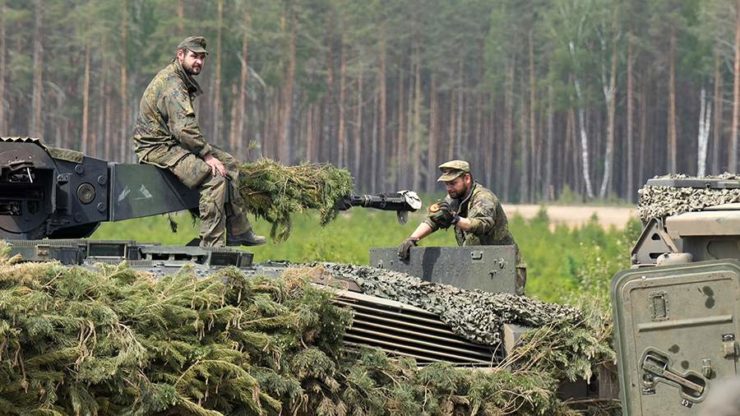
Buried in Steel: Military Production & NATO’s Proxy War in UkraineNow in its third year, Russia’s Special Military Operation (SMO), precipitated by the overthrow of neighboring Ukraine’s elected government and the subsequent militarization of the country by the US and the rest of NATO, is admittedly benefiting from Russia’s immense military industrial base.
The collective Western media, once replete with stories of shoddy, antiquated Russian weapons being flattened by “game-changing” NATO weapons, now features headlines about the growing gap between Russian military production and NATO’s inability to catch up. Other headlines now admit that previously vaunted NATO weapons have shortcomings exposed over the course of the past 2 years plus of fighting.
Buried in Steel: Russian Artillery Shell and Glide Bomb Production
Among these headlines is Sky News’ late May 2024 article, “Russia is producing artillery shells around three times faster than Ukraine’s Western allies and for about a quarter of the cost,” which admits:
The research on artillery rounds by Bain & Company, which drew on publicly available information, found that Russian factories were forecast to manufacture or refurbish about 4.5 million artillery shells this year compared with a combined production of about 1.3 million rounds across European nations and the US.
Artillery is among the most decisive factors deciding the fighting in Ukraine. According to the US government and Western corporate-funded Council on Foreign Relations, an April 2024 brief titled, “Weapons of War: The Race Between Russia and Ukraine,” notes:
Artillery has been known as the “king of battle” for centuries, and this largely remains true today. In the Russia-Ukraine war, artillery fire accounts for about 80 percent of the casualties on both sides. That makes it all the more ominous that in recent months, following the U.S. aid cutoff, Ukraine went from being outgunned five to one in artillery fire to ten to one.
If Ukraine is outgunned anywhere between 5:1 to 10:1, this means its casualties will likewise reflect this disparity. According to various Western sources including the British Ministry of Defense, if Russia has suffered “355,000” casualties, Ukraine has suffered approximately 5 to 10 times more, or 1.7 million to 3.5 million Ukrainian casualties.
More realistically, Russian losses are more likely 50,000 versus half a million Ukrainian losses.
Another growing area of concern for NATO and its Ukrainian proxies is Russia’s use of precision-guided glide bombs dropped by Russian warplanes outside the range of what remains of Ukrainian air defenses, able to target and dismantle Ukrainian fortifications on a scale that even Russia’s immense artillery advantage is incapable of.
The BBC, in a late May 2024 article titled, “Russia’s glide bombs devastating Ukraine’s cities on the cheap,” would explain:
Russia is increasingly using “glide bombs” – cheap but highly destructive ordnance – to advance its offensive in Ukraine.
More than 200 of them are thought to have been used in just a week to pound Ukraine’s northern town of Vovchansk during Russia’s current cross-border advance near Kharkiv.
President Volodymyr Zelensky said 3,000 such bombs were dropped on the country in March alone.
While Ukraine has received the US equivalent, the Joint Direct Attack Munition (JDAM), with its dwindling number of warplanes coupled with superior Russian electronic warfare (EW) capabilities, this capability has been rendered irrelevant.
The London-based Royal United Services Institute (RUSI) in a June 2023 report titled, “Jamming JDAM: The Threat to US Munitions from Russian Electronic Warfare,” would extensively explain the shortcomings of US munitions and the unlikelihood of the US solving the technical challenges of proofing US glide bombs against Russian jamming.
Even if the US were able to overcome Russian EW capabilities, the number of US and European-made glide bombs would always remain a fraction of those used by Russia due to the lack of warplanes and trained pilots able to deliver them.
NATO “Wonder Weapons” Fail to Meet Expectations
Beyond US-made JDAMs failing to hit their mark, a number of other precision-guided weapons transferred to Ukraine have also faced Russian EW jamming including the US-made Excalibur 155mm GPS-guided artillery shell, the Guided Multiple Launch Rocket System (GMLRS) fired by likewise US-made HIMARS and M270 launchers, and the US-made Ground-Launched Small Diameter Bombs (GLSDBs) also launched via HIMARS and M270 systems.
While these weapons have been employed successfully on the battlefield, their overall effectiveness has been hindered by Russian EW capabilities. Because they are also provided in smaller quantities than the equivalent Russian munitions, this creates a decisive advantage for Russia.
Other “game-changing” weapons that have been exposed throughout the fighting in Ukraine includes German-made Leopard 1 and 2 main battle tanks (MBT) and the British-made Challenger 2 MBT, both of which were used amid Ukraine’s failed 2023 offensive.
Also transferred to Ukraine were American-made M1 Abrams MBT. These were held back during the 2023 offensive, and instead made their battlefield debut during fighting in Avdeevka this year, amid which Russian forces prevailed.
Images and footage of M1 Abrams burning on the battlefield demonstrated they were no exception to the outcome of other Western MBTs in Ukraine.
CNN, in a recent article, interviewed Ukrainian crews attempting to use the M1 Abrams, reporting their frustration and disappointment.
Titled, “Soldiers in Ukraine say US-supplied tanks have made them targets for Russian strikes,” the article admits:
Crews trained in Germany said the vehicles – the US military’s main $10 million battle tank used in Iraq against Saddam Hussein’s forces and insurgents – lacked armor that could stop modern weapons.
“Its armor is not sufficient for this moment,” said one crew member, callsign Joker. “It doesn’t protect the crew. For real, today this is the war of drones. So now, when the tank rolls out, they always try to hit them.”
This contradicts claims made by Western analysts and commentators praising the “survivability” of Western armored vehicles.
The article also discusses the logistical and maintenance challenges of the tank, rendering many of those remaining inoperable.
The article admits:
…they appear to have technical issues too.
One, parked under a tree, was almost immobile during CNN’s visit, due to an engine problem, the crew say, despite the vehicle having just been shipped in from Poland. They also complain of how, in rain or fog, condensation can fry the electronics inside the vehicle.
CNN also reported that the ammunition provided to Ukrainian M1 Abrams crews was meant for tank-on-tank warfare, which the article admits is a rarity. The tanks are instead used as assault guns to fire on infantry positions, meaning that a high-explosive round would be more appropriate, but apparently were not provided in sufficient numbers.
Finally, CNN admits that the failure of US-made M1 Abrams tanks may also be owed to the fact that Ukraine is expected to use them in a manner the US and NATO never intended, without sufficient artillery and air support.
CNN notes:
The Ukrainian crew expressed frustration the tanks were made for a NATO style of warfare, in which air power and artillery prepare the battlefield before tanks and infantry advance. Kyiv has long bemoaned its lack of artillery and air power.
Ukraine has neither, making all of the complex, heavy, unreliable Western tanks transferred to Ukrainian forces particularly vulnerable, including the M1 Abrams.
A Predictable Outcome
Contrary to the many Western headlines heralding the transfer of Western weapons to Ukraine anticipating “game-changing” outcomes, the failure of US-European hardware was entirely predictable.
The myth of Western military superiority was based entirely on the series of mismatches spanning multiple conflicts over the course of several decades where the US and its allies waged war on nations with poorly trained, poorly equipped forces. While many of these nations were supposedly operating “Soviet” or “Russian” military equipment, it was multiple generations behind the state-of-the-art and operated by poorly organized units unable to use the equipment to its full potential.
Even with these many disadvantages, nations targeted by US wars of aggression over the decades did demonstrate that, at least in theory, US and European weapons had limitations and would be vulnerable in battle against a peer or near-peer adversary. Because of this, and other factors including challenges regarding training and logistics, the effectiveness (or lack thereof) of Western weapons on the battlefield in Ukraine was predictable.
The myth of Western military superiority has now been fully shattered in Ukraine, where Western weapons are turning out to suffer both quantitative and qualitative limitations, giving Russian forces a decisive advantage on the battlefield, and an advantage the West is incapable of seizing upon for itself.
The aforementioned Sky News article, discussing the vast and multiplying number of Russian glide bombs, also noted shortages of Western-provided weapons owed to insufficient military industrial production across the West.
The article includes a section titled, “Factories could win the war on frontlines,” admitting:
The importance of producing weapons and ammunition is why many experts say factory production lines – rather than the frontline – could be where the war in Ukraine is won.
This reflects the adage, “amateurs talk strategy and professionals talk logistics.”
The article explains that Western arms manufacturers only expand production capacity when sufficient orders are placed. This maximizes profit, but at the expense of readiness. Expanding production is a costly process, requiring resources, and more critically, time.
Russia’s state-owned arms manufacturing enterprises prioritize readiness and maintain excessive capacity regardless of orders, meaning it is capable of ramping up production in a relatively short period of time measured in months versus Western factories which require a year or more.
It is clear that Ukraine’s current crisis is a result, at least in part, of Russia’s long-term focus on military industrial production and logistics, years before the SMO was launched, versus a collective West whose proxy war is being fought with weapons and a military industrial base never meant to operate on this scale, at this intensity, and for this long.
If and when the collective West makes serious efforts to expand military industrial production, Russia is already working from a multi-year head start. Collective US-European artillery shell production, for example, is projected to expand to between 2.5 and 3 million shells a year between 2025-2027. This is still less than Russia produces currently. By 2025-2027, Russia will almost certainly have expanded production even further.
Ultimately, Ukraine’s “victory” amid this conflict was never a genuine objective among policymakers in Washington, London, and Brussels. As admitted in the 2019 RAND Corporation paper, “Extending Russia,” the plan always was to provoke a costly Russian intervention in Ukraine to overstretch Russia and possibly precipitate a Soviet Union-style collapse. The conflict for Ukraine, the report predicted, “could produce disproportionately large Ukrainian casualties, territorial losses, and refugee flows. It might even lead Ukraine into a disadvantageous peace.”
Today we see what the aftermath of Washington’s proxy war with Russia in Ukraine is, an Eastern European nation, once balancing itself between East and West, benefiting from doing business with both worlds, being buried by Russian steel for the benefit of allies who are unable and also unwilling to genuinely assist Ukraine.
Much of the rhetoric coming out of the collective West is designed to encourage Ukraine to irrationally fight on despite the obvious outcome of the fighting – an outcome well-known even as early as 2019. While a deep hatred has been deliberately bred in the hearts and minds of many Ukrainians against Russia, their real enemy has always been the leadership of the collective West. The shortsighted nature of Western policymaking, predicated on the perpetual but ultimately unsustainable procurement of profits, power, and influence, makes the collective West its own worst enemy as well.
Only time will tell just how far this self-destructive process continues before wiser counsel prevails, a more appropriate Western foreign policy adopted, and Ukraine finally sits at the negotiating table to end a war it not only can’t win (and was never expected to win in the first place), but one the longer it fights, the less “Ukraine” there ultimately will be if its conclusion is allowed to be decided entirely on the battlefield.
In the meantime, Russian military industrial production only continues to grow. Artillery shells, armor, airpower, glide bombs, drones, air defenses, and missiles of all kinds not only continue to be produced in greater quantities, but are being developed toward greater quality. In many instances, Russian military hardware exceeds the capabilities of its Western counterparts. Because there is simply more of it, regardless of quality, it can simply “bury” adversaries on the battlefield with steel.
https://libya360.wordpress.com/2024/06/ ... n-ukraine/
******

On the Brink: The NATO-Russia Ukrainian War Comes to Europe
by GORDON HAHN
June 2, 2024
The NATO-Russia Ukrainian for, the war for and against NATO expansion, is on the brink of expanding to the NATO countries that provoked Russia to invade Ukraine on 24 February 2024 and have supported its continuation ever since, save one—the United States of America—ironically, the real force behind the war’s genesis. Sixteen years ago today’s CIA Director, at the time US Ambassador to Moscow, William Burns was ignored when he informed Washington:
“Ukraine and Georgia’s NATO aspirations not only touch a raw nerve in Russia, they engender serious concerns about the consequences for stability in the region. Not only does Russia perceive encirclement, and efforts to undermine Russia’s influence in the region, but it also fears unpredictable and uncontrolled consequences which would seriously affect Russian security interests. Experts tell us that Russia is particularly worried that the strong divisions in Ukraine over NATO membership, with much of the ethnic-Russian community against membership, could lead to a major split, involving violence or at worst, civil war. In that eventuality, Russia would have to decide whether to intervene; a decision Russia does not want to have to face. ….“Russia’s opposition to NATO membership for Ukraine and Georgia is both emotional and based on perceived strategic concerns about the impact on Russia’s interests in the region. It is also politically popular to paint the U.S. and NATO as Russia’s adversaries and to use NATO’s outreach to Ukraine and Georgia as a means of generating support from Russian nationalists. While Russian opposition to the first round of NATO enlargement in the mid-1990’s was strong, Russia now feels itself able to respond more forcefully to what it perceives as actions contrary to its national interests” (https://wikileaks.org/plusd/cables/08MOSCOW265_a.html).
Rather than heed Burns’s warning and that of numerous objective experts, the US and NATO tried to remake Ukraine, funding anti-Russian forces and backing what became a violent, terrorist coup led by neofascists in February 2013, confounding an agreement worked out by regime, opposition, Europe, and Russia that would have resolved the crisis.
The post-coup NATO involvement in Ukraine was discussed in unusual pieces. One had purposes beyond the present discussion, The New York Times (NYT), acknowledged that the CIA was involved in Maidan Ukraine no later than immediately after the coup (https://www.nytimes.com/2024/02/25/worl ... a-war.html). In one rare objective opinion published in NYT on the subject, it was noted: “Over the next decade, the US and its allies built a powerful Ukrainian army while sabotaging the Minsk agreement and later (after the Russian invasion) also sabotaged the Istanbul negotiations. Weapon systems poured in, Ukrainian ports were modernised to fit American warships, and Ukraine was becoming a de facto NATO member. Top Ukrainian officials like Arestovich argued openly they were preparing for a war with Russia. A top adviser to former president Nicolas Sarkozy, warned that the US-Ukraine Charter on Strategic Partnership of November 2021 convinced Russia that it must attack or be attacked’” (https://www.nytimes.com/2022/05/31/opin ... n-war.html).
The decision to supply nuclear capable F-16 fighter jets to Kiev and the recent French and presumably other Western countries’ coming declarations making official their previous and future deployments of ‘instructors’ and ‘advisors’ to the Ukrainian front is dangerously escalatory enough. Moscow is required to respond with an answering escalation to save face internally before the Russian people and externally before the world. Now NATO, in the person of its GenSec, has opened up the Overton window by way of convening discussions with member-states on the introduction of troops and the use of Western-supplied mid-range rockets to hit deep inside Russian territory. Poland is on the verge of deploying its missile defense systems to protect Ukraine from Russia attacks. Moreover, a claim is being circulated to the effect that decision of 12 NATO countries (UK, France, Netherlands, Denmark, Canada, Sweden, Finland, Poland, the Czech Republic, Estonia, Latvia, and Lithuania so far) to allow Kiev to use Western missiles to strike deep into Russia — as far as Moscow and Russia’s ‘second capitol’ of St. Petersburg. Germany, not included in the list, has apparently changed its position and now supports attacks on Russia using Western weapons, as Chancellor Olaf Shultz stated standing next to French President Emmanuel Macron last week. Berlin also is still considering sending long-range Taurus missiles to Kiev. For its part, the US is considering giving permission to Kiev to use US weapons, such as ATACM missiles (180-mile range), against military targets deep inside Russia (https://www.wsj.com/world/blinken-signa ... s-61fedb10). The US has announced that it will allow the use of weapons it has supplied to Ukraine for attacks on Russian proper in the battle in the Kharkov (Kharkiv) border region now the focus of a Russian counteroffensive. Otherwise, for the moment Washington will continue to pretend it is opposed to Ukraine’s use of American weapons against Russia proper, using official statements and media plants to this tune: “a U.S. official said Washington had expressed concerns to Kyiv over Ukraine’s strikes — using its own weapons — on Russian radar stations that provide conventional air defense and early warning of nuclear launches by the West.” (https://www.washingtonpost.com/national ... orruption/). Ukraine’s armed forces could not have made this attack without US assistance. The US also will soon conclude a US-Ukraine Security Pact likely intended to institutionalize US weapons, training, intelligence, operational, and financial support to Kiev for the ‘long war.’ Fifteen European states have already concluded such long-term security agreements with Kiev over the last few months (https://www.pravda.com.ua/rus/news/2024/05/31/7458547/).
All this —added to the Western weapons, intelligence, training, operational planning, and undercover military personnel contributed to Kiev — makes Ukraine de facto a full-fledged NATO member-state. In other words, NATO countries — and thus de facto NATO itself — are preparing to do officially what they have been doing clandestinely since February 2022: fight Russia in Ukraine for the right to expand NATO when and where Washington and Brussels want. Before all this, Western countries — all the leading members of NATO — were de facto and de jure co-belligerents with Ukraine against Russia. Suffice it to note that Ukraine does not have space based reconnaissance data for targeting but is receiving such from French, German, US and other NATO militaries.
It appears that the recent Western escalations are driven in part by the need to prevent a Russian victory at all costs in order to save face for the US and NATO and, perhaps no less importantly, to salvage US President Joe Biden’s career in the coming presidential elections—a career that has been so disastrous for his family, Americans in general, and now the world. The authoritarianizing Democrat Party-state Biden administration has no limits in what it will do to achieve foreign and domestic hegemony; regarding the latter, witness the weaponization of the judicial system against both rank-and-file American citizens and former US President Donald Trump. To achieve its ends, Washington and other Western countries are willing to mount an over-escalation that very possibly will provoke Russian to target Western sites, perhaps ‘decision-making centres’ as some Russians have proposed. It is more likely that Moscow will target any objects located in NATO countries used for air sorties for attacks on Russia: airfields in Poland and Romania, operational and intelligence centers, air defense installations in Poland, and the like. In the event, a Europe-wide war conflagration threatens to break out. Such Russian retaliation will cause NATO to invoke Chapter 5 requiring a decision on whether to undertake military measures against Moscow directly. Russian officials and media are already preparing the Russian public for the likelihood of a broader war sparked by the West.
Two weeks ago, Ukraine attacked and damaged or destroyed 2 of Russia’s 10 early ballistic missile warning systems designed to pick up nuclear missile attacks on Russia coming from the south. The Austrian Armed Forces published analysis suggesting that the attacks could have been sanctioned by the US and were meant as a warning to Moscow, because there targets were of no military value for Kiev. If this is how Austrian military elements see this attack, one can imagine how the Russian GRU, SVR, and other security-interested elements see this attack at least in symbolic terms or future potentialities, since the radar systems were not aimed at discovering missiles coming from the west.
These attacks were clearly intended by Ukrainian leader Volodomyr Zelensky to intensify tensions between Russia and the West and provoke Moscow into an overreaction in order to bring NATO closer to direct military intervention in the war. Zelensky has attempted this numerous times, from attacking Crimea and the Black Sea Fleet with Western rockets, using American intelligence for targeting, to claiming Russian plots to explode nuclear power plants and the like. He will now have a much easier job pushing the West and thus Russia over red lines. Expanding the war is the only way to save himself, the Maidan regime, and a Ukraine — if a rump one — with a viable opportunity to join NATO and the EU.
Although these intensifications of the war crisis may not occur immediately, once Russian forces’ offensive seem destined to reach the Dniepr River and/or political instability breaks out in Kiev, Washington will be forced to return to the issue and likely ‘pull the trigger’ allowing Kiev to use Western missiles and operations to hit targets deep inside Russia. This may come in autumn. This dangerous approach would be consistent with the West’s possible strategy of upping the length and costs of the war so that it lasts until Putin’s health falters and/or war costs damage the Russian economy’s health, prompting his political demise. This ‘long war strategy is reflected in the noted security pacts between Ukraine and 15 European states, with Washington soon to follow.
Worse still, the European NATO war risks expanding into a world war, if, for example, in addition to Belarus, other CSTO states were to send equipment or even troops to support Moscow in Ukraine, or if China were to intervene on Moscow’s behalf more aggressively in these or other ways. Western criticism of Chinese trade and technology transfers with military applicability and more recent Western claims that China is already supplying weapons to Moscow demonstrate just how this vector in expansion of the NATO-Russia Ukraine War already is kinetic rather than theoretical. China cannot allow Moscow to lose its ‘special military operation’ that likely would deprive it of its most powerful ally at a time when Washington is gearing up for a twilight struggle against Beijing. Moreover, once the war spreads beyond Ukraine, the temptation on both sides to machinate asymmetrical escalations elsewhere grow. The West might target Georgia, Kazakhstan, or, again Belarus, Syria, and Iran. Moldova and Armenia could become Russian foci of asymmetrical escalation. In a grave pinch, China and Russia might be able to entice North Korea to attack South Korea. The US and China can provoke each other on Taiwan or in the South China Sea. The US’s hundreds of military and intelligence installations abroad could become targets, transformed from assets into liabilities. A kind of perfect storm is coming. This autumn there likely will be: the collapse of the Ukrainian front and/or army and/or regime; the Russian army’s approach to the Dniepr and perhaps encirclement of Zaporozhe, Kharkiv, even Kiev; and an American political crisis (given the guilty verdict against Republican presidential candidate Donald Trump). The possibilities are almost endless, and some rather dire ones are becoming increasingly more probable.
https://gordonhahn.com/2024/06/02/on-th ... to-europe/
******
Good Catch...
Az Izvestia reports, some French catch near Liptsy village yesterday.
(Short video at link.)
I am sure the birdie will be singing and then, maybe, he will be sent to Monsieur Macron with all the appropriate publicity. The guy was wounded and VSU tried to kill him. Well, he is lucky, he will have now humane treatment, good medical care and good rest in Russian captivity. The only question will be what is his REAL background... in French Army.
http://smoothiex12.blogspot.com/2024/06/good-catch.html
Ah, Yes. Hurt Feelings.
General Mark Hertling still doesn't believe that US makes primarily expensive junk not fit for real battlefield. But then again, Hertling never saw a real one.
Hear retired US general's response to Ukrainian soldiers who say US-issued tanks are underperformin. Retired US Army Lt. Gen. Mark Hertling, who spent part of his career aboard the Abrams tank, reacts to some Ukrainian soldiers telling CNN that their US-supplied Abrams tank are underperforming in the field.
Well, I have news for this general--this is the first time in history when M1 Abrams encountered a real army. And not just the real army, but the army which technologically and operationally is way better than the US Army. They cannot face the facts that militarily Gulf War was a non-event for real military science. But that's the only thing they have to fall back on and try to derive face-saving excuses. Meanwhile:
The US State Department has seized the passport of former Marine and UN weapons inspector Scott Ritter, he told RT on Monday. Ritter was on his way to Russia for the St. Petersburg International Economic Forum (SPIEF) when he was pulled off the plane and had his documents confiscated. “My passport was seized by the State Department,” Ritter told RT in a message. “I was pulled off the airplane.” “I’m fine, just aggravated,” he added.
Here is the American "democracy" in full swing. That's everything you need to know. But feelings are "hurt" nowadays in America which is in a state of complete implosion of her institutions across the board.
http://smoothiex12.blogspot.com/2024/06 ... lings.html
*****
UKRAINE WAS A MAGNET FOR FOREIGN FIGHTERS. AFTER 2 BRUISING YEARS, MANY ARE DISILLUSIONED OR DEAD.
JUNE 4, 2024 LEAVE A COMMENT
By Cameron Malley, Business Insider, 5/11/24
-Ukraine’s International Legion was born in 2022, a home for foreigners eager to fight Russia.
-Ukraine said 20,000 signed up, though experts said 4,000 was a more realistic peak figure.
-In 2024, the legion is depleted by years of harsh reality and casualty rates extreme even for Ukraine.
Three days after Russia’s full-scale invasion of Ukraine in 2022, President Volodymyr Zelenskyy issued a clarion call for “friends of peace and democracy” to join the fight from abroad.
Zelensky’s International Legion of Territorial Defense of Ukraine (ILDU) was born, echoing the International Brigades that fought fascism in the Spanish Civil War of the 1930s.
Many answered. Outside Ukraine’s embassy in London Business Insider found men lining up to serve.
“If they need to shove a rifle in my hands and put me on the front, then that’s what they need to do,” said one, a nightclub worker.
“It’s better than sitting with my thumb up my ass.”
The Legion emerged from these recruits — some with military experience, some without.
It has been deployed across the front lines in some of the war’s toughest battles, where any of its members died.
Carl Larson, a US veteran who served in Iraq, spent three months fighting around Ukraine’s eastern city of Kharkiv in the summer of 2022. He told BI his comrades’ motivations were mixed.
“Many of us were there for the right reasons, to defend democracy,” he said.
“Lots of others,” though, “were there for the wrong reasons: adrenaline junkies, people looking for a surrogate family, or because they had personal problems back home.”
Studies from in July and September last year by the London-based Royal United Services Institute (RUSI) reached a similar conclusion.
Some parleyed their postings into fame on social media, issuing impassioned dispatches from the war zone.
BI’s coverage of the International Legion since its inception found that recruits were a mixed bag of qualified veterans, glory-seekers and people trying to give their often chaotic live meaning but totally unsuitable for a military role in a war zone.
In one case, a Legion volunteer from Alabama even defected to Russia.
Some volunteers barely lasted a week. A Russian missile strike in March 2022 hit a base near Lviv being used for foreign fighters.
According to Ukrainian officials, dozens of Ukrainians were killed and more than 100 foreign volunteers injured, ending their campaigns before they began.
Marco Bocchese, assistant professor of international relations at Webster Vienna Private University and an author of the September RUSI study, called the attack a “watershed moment” for many foreign volunteers.
Ukraine originally said 20,000 foreign volunteers had signed up to fight. Bocchese told BI that this figure was “pure propaganda.”
In January last year, The Washington Post estimated that the figure was likely closer to 3,000.
Four experts contacted for this report estimated the May 2024 strength of the legion at between 1,000 and 2,000.
Some foreigners have found other homes in the Ukrainian military: in the intelligence services, or in separate Ukrainian units, such as the elite Chosen Company — a reconnaissance and assault unit composed of US and Australian volunteers within the 59th Motorized Brigade.
This video from 2023 shows the Chosen Company at work:
Matteo Pugliese, a researcher at the University of Barcelona who authored the July study, told BI that Ukrainian intelligence coordinates its own branch of foreign volunteers.
“This includes three Russian groups, Belarusian units, the Georgian Legion, and Western veterans with better combat skills,” he said.
All told, this might add another 1,000 or 2,000 soldiers, for a total of 3,000-4,000 foreigners fighting in Ukraine.
Killed in action
International fighters proved “more expendable than Ukrainian soldiers for high-risk operations,” Pugliese said.
Indeed, Larson, who headed a 25-man platoon of legionaries in 2022, said he and his men were a “sacrificial unit.”
“We were a speed bump,” he said. “If the Russians had come, we could have held them up for maybe an hour.”
Larson said that many foreign volunteers, especially those who had fought in places like the deserts of Iraq, struggled to adapt to both the terrain in Ukraine as well as the weapons used there.
“We lost many guys to drones,” he said.
The Legion’s press service declined to comment on its strength, citing security reasons.
A spokesman, Oleksandr Shahuri, said that more than 100 nationalities had joined up.
A report by Task and Purpose in February of this year concluded that at least 50 of those who died were US citizens, a figure that is likely an undercount.
Of those 50, most had served in the US military, including 20+ Army veterans and 12 ex-Marines.
There was a Green Beret and a Navy SEAL. Some had conventional military careers, others left after getting into trouble.
A US State Department spokesperson said there is no official tally.
“Our ability to verify reports of deaths of US citizens in Ukraine is extremely limited,” they said. “In addition, not all US citizen deaths may be reported to US authorities. For these reasons, we are unable to provide a definitive number of all US citizens who have been killed.”
The Legion’s future
Earlier this year, Zelenskyy issued a decree allowing foreign nationals legally in the country to enter its National Guard. He also proposed legislation making it easier for foreigners defending Ukraine to receive citizenship.
That could prove “very enticing” for some foreign volunteers, Bocchese said. “Many want to make Ukraine their future home.”
In some states, fighting for Ukraine means giving up your freedom back home. Austria, Montenegro, Kosovo, and India made it illegal to join up.
“Some will be facing criminal sanctions upon returning home for the fact that they enlisted in a foreign unit,” Bocchese said.
For that reason, many hope to gain citizenship and “put roots down,” said Larson, the US veteran.
Ukraine’s efforts to draft its own men mean the Legion is “no longer decisive or relevant in strategic terms,” Pugliese said.
An April 2024 increases payments for Ukrainian volunteers, adds new punishments for draft dodging, and seeks to compel Ukrainian men living abroad to come home.
According to Larson, who continues to help recruiters for the Legion, sign-ups have dwindled by two thirds since the flood of March 2022.
“Half the signups are from Latin America now,” he noted, a big shift.
In the fall of 2023, the Legion began admitting Spanish-speaking applicants, many of whom were inadmissible before, Pugliese told BI.
Some had made it in but were mistreated by their officers, he said.
The new Bolivar Battalion, for example, was formed by fighters from Venezuela, Ecuador, Argentina, and Colombia and was is led by a Venezuelan anti-government fighter.
Many are former professional soldiers from Colombia, battle-hardened fighting drug cartels and rebel groups in their homeland.
Experienced non-commissioned officers can earn four times as much as back home, or even more, the Associated Press reported.
Latin Americans “have different motivations from typical Western soldiers,” Larson told BI.
“They’re there for the money.”
https://natyliesbaldwin.com/2024/06/ukr ... d-or-dead/
